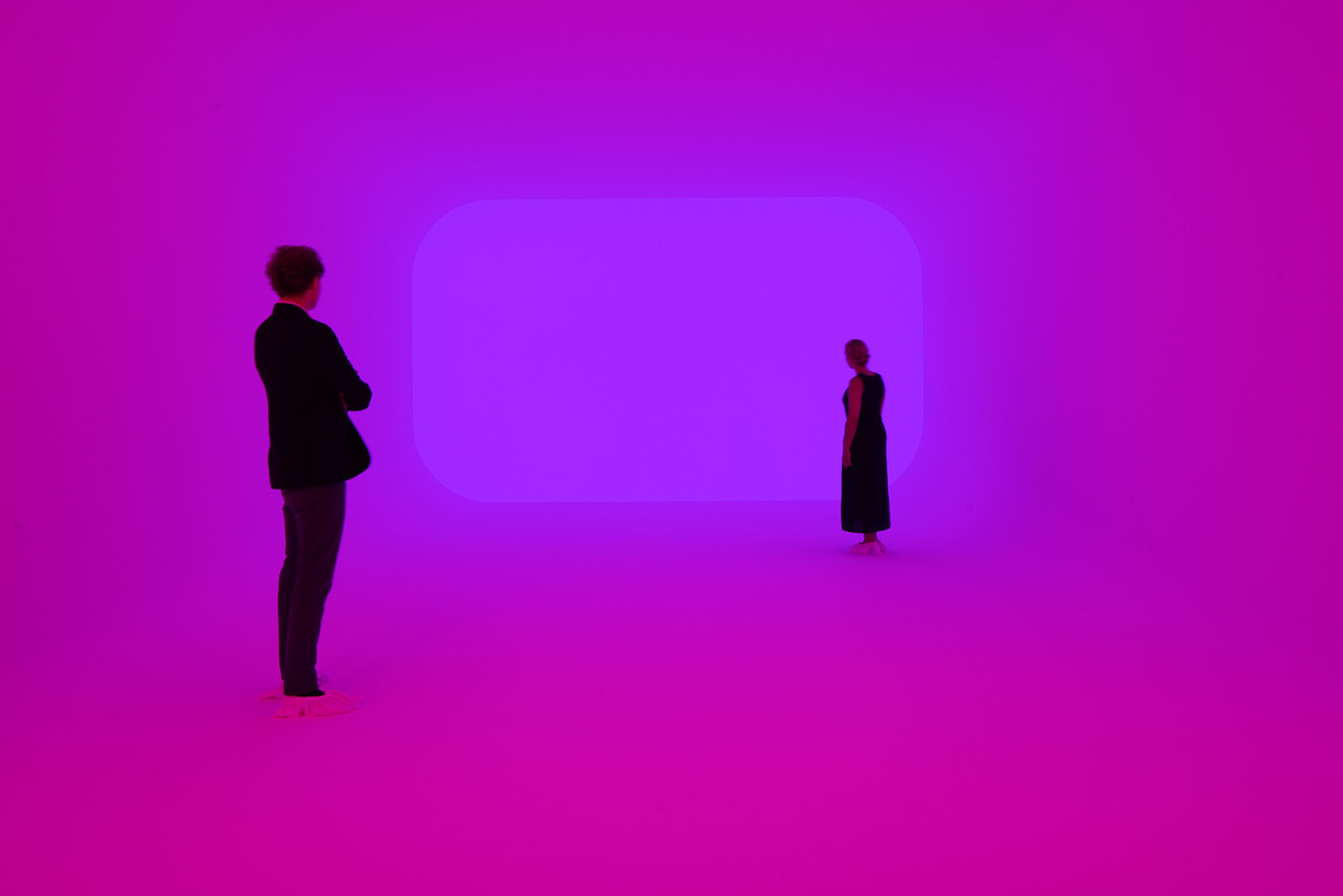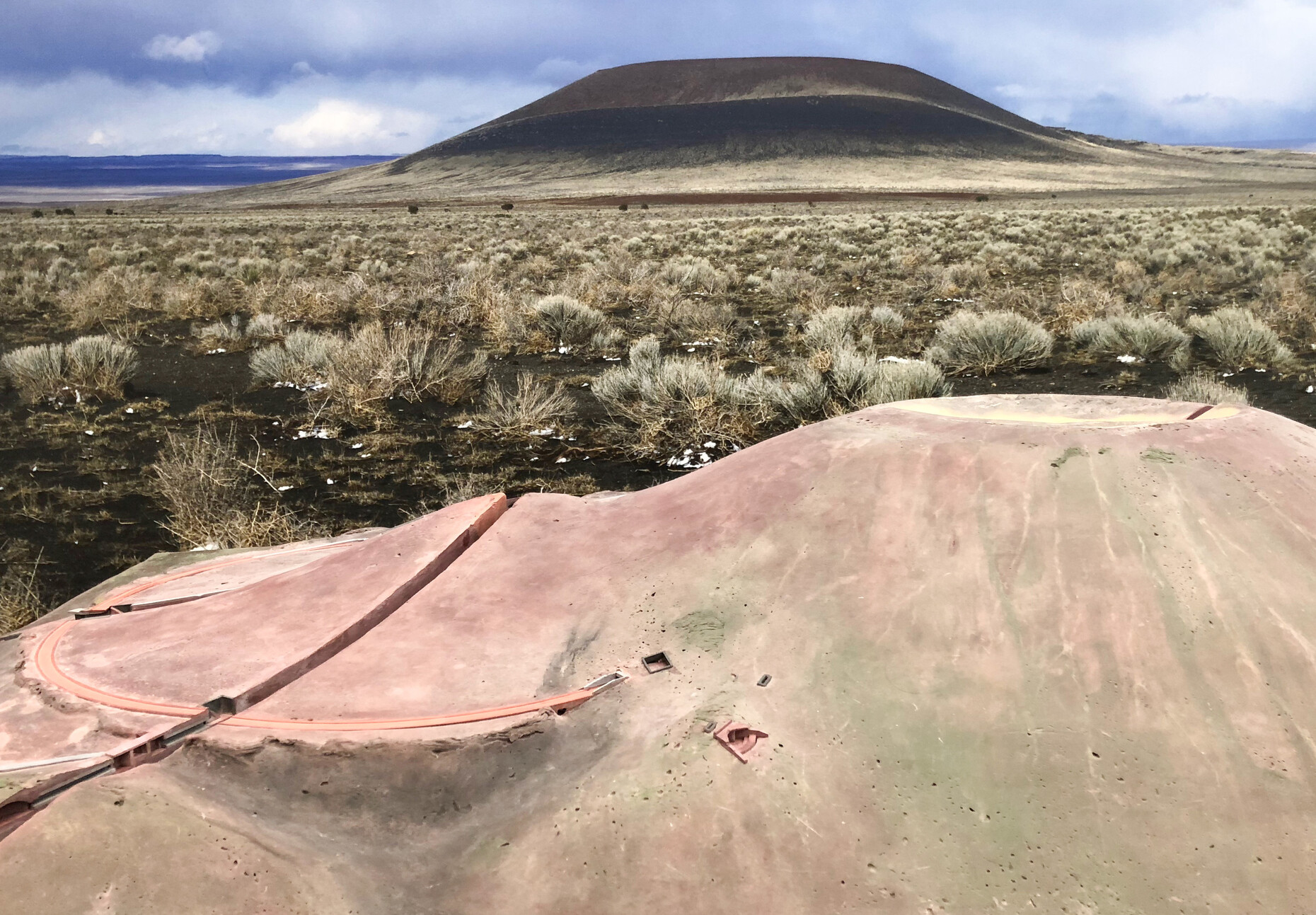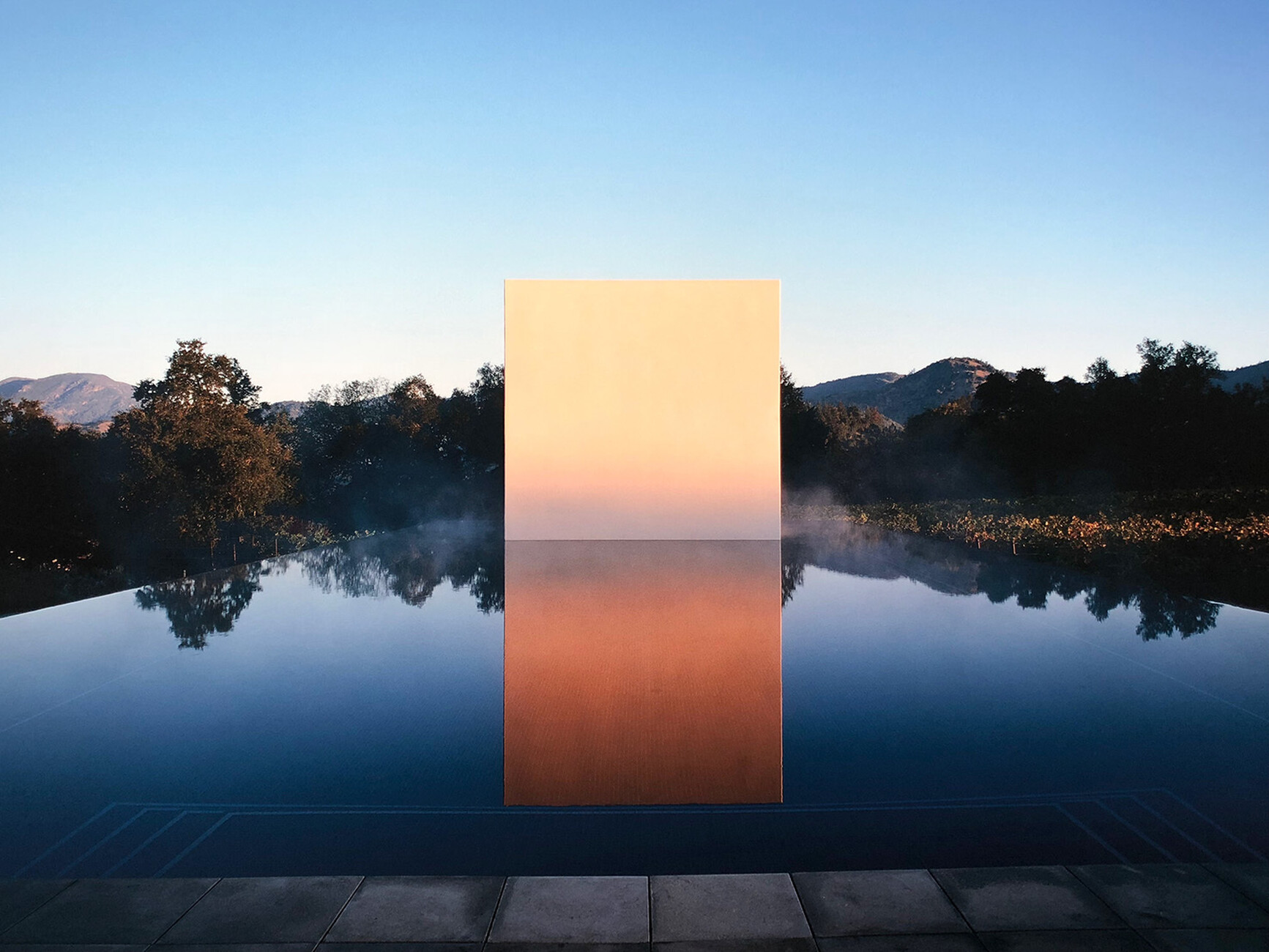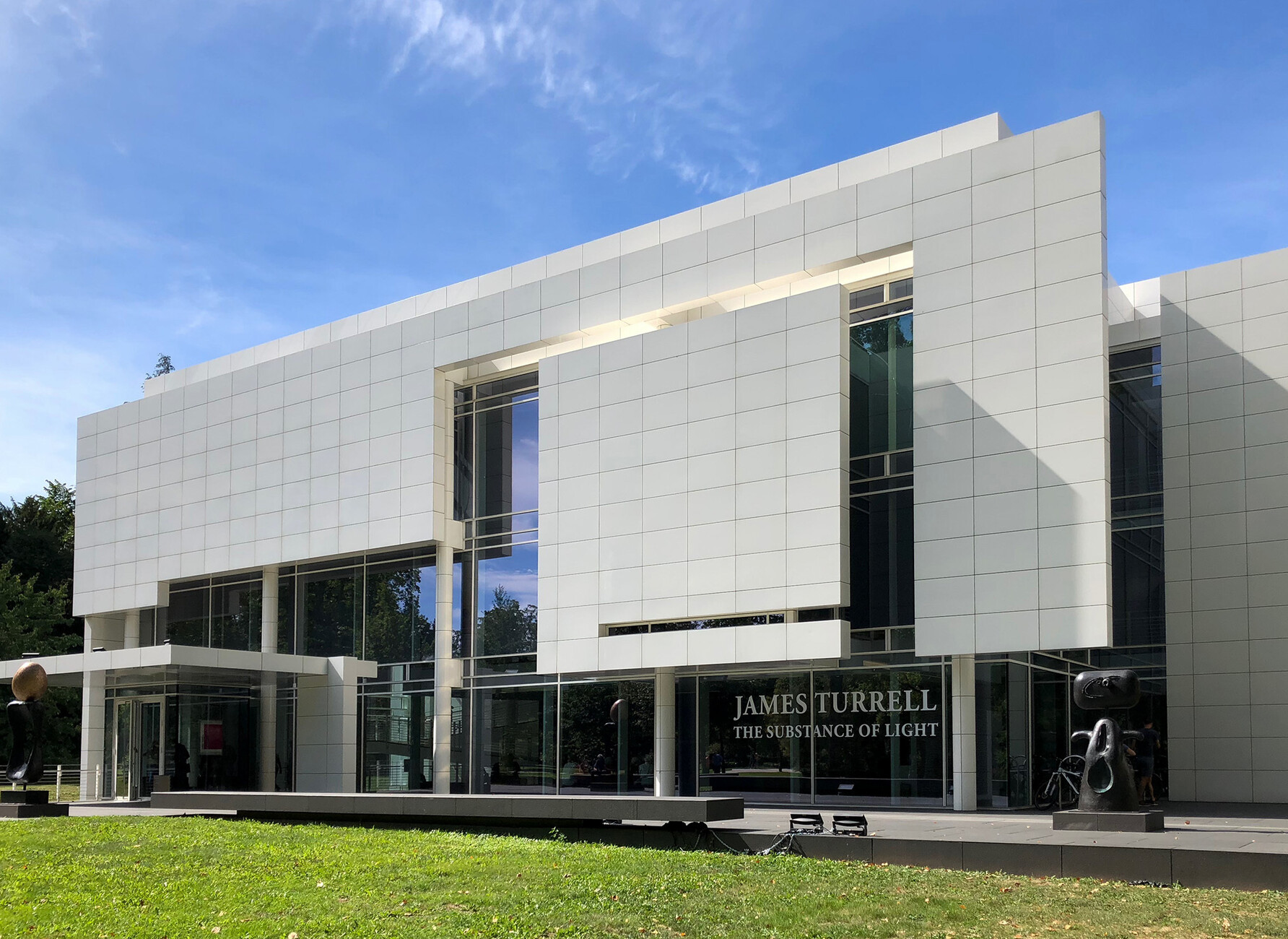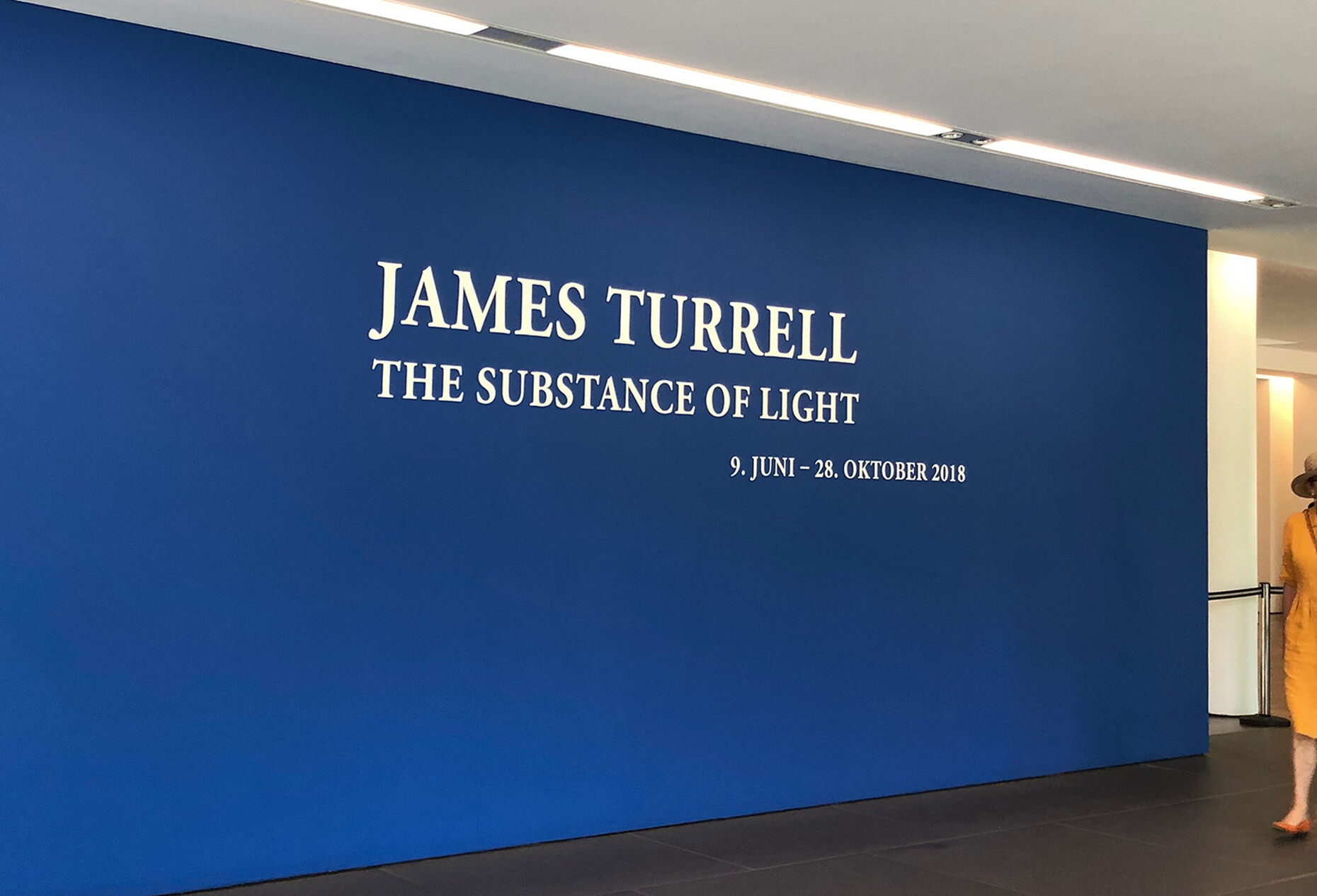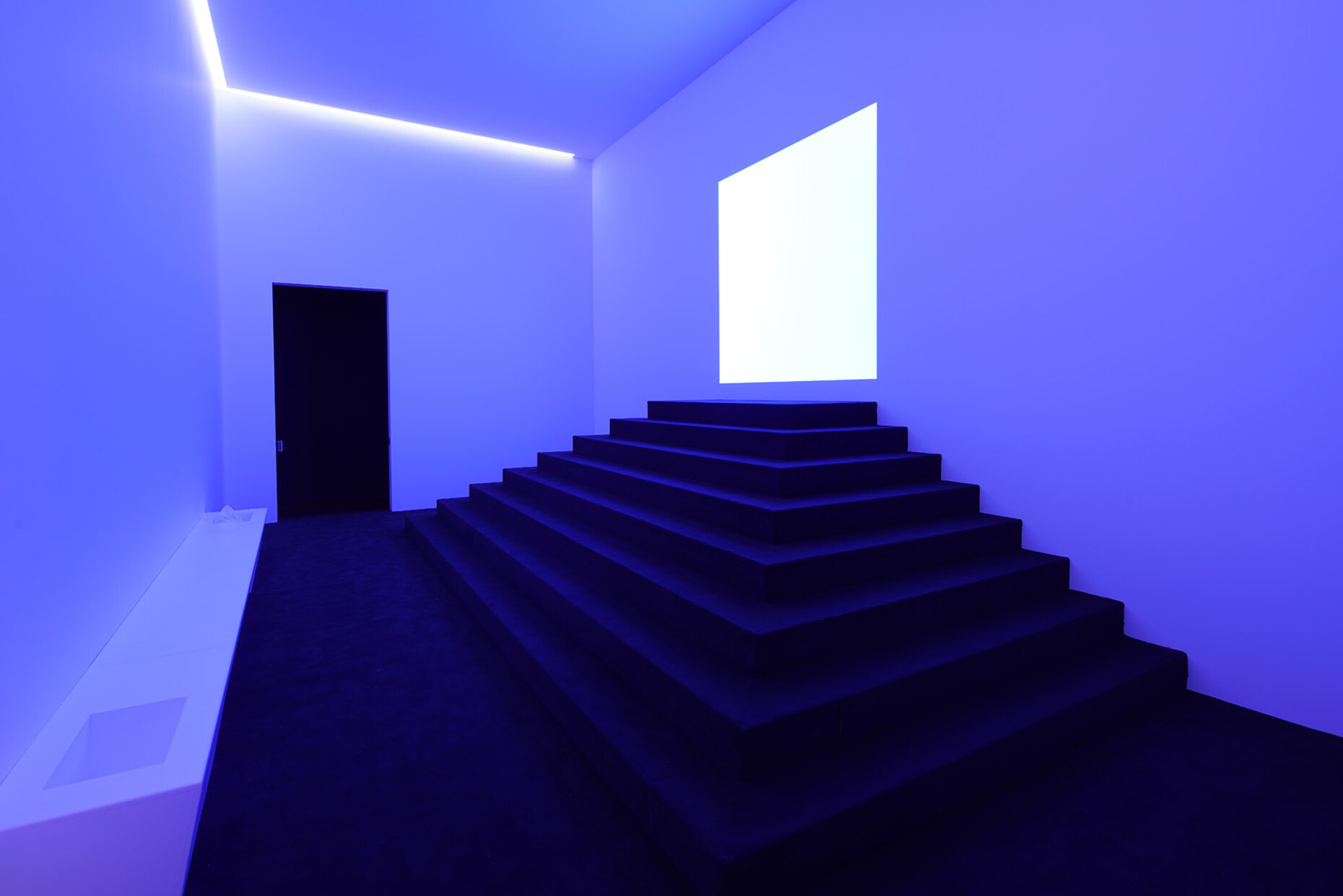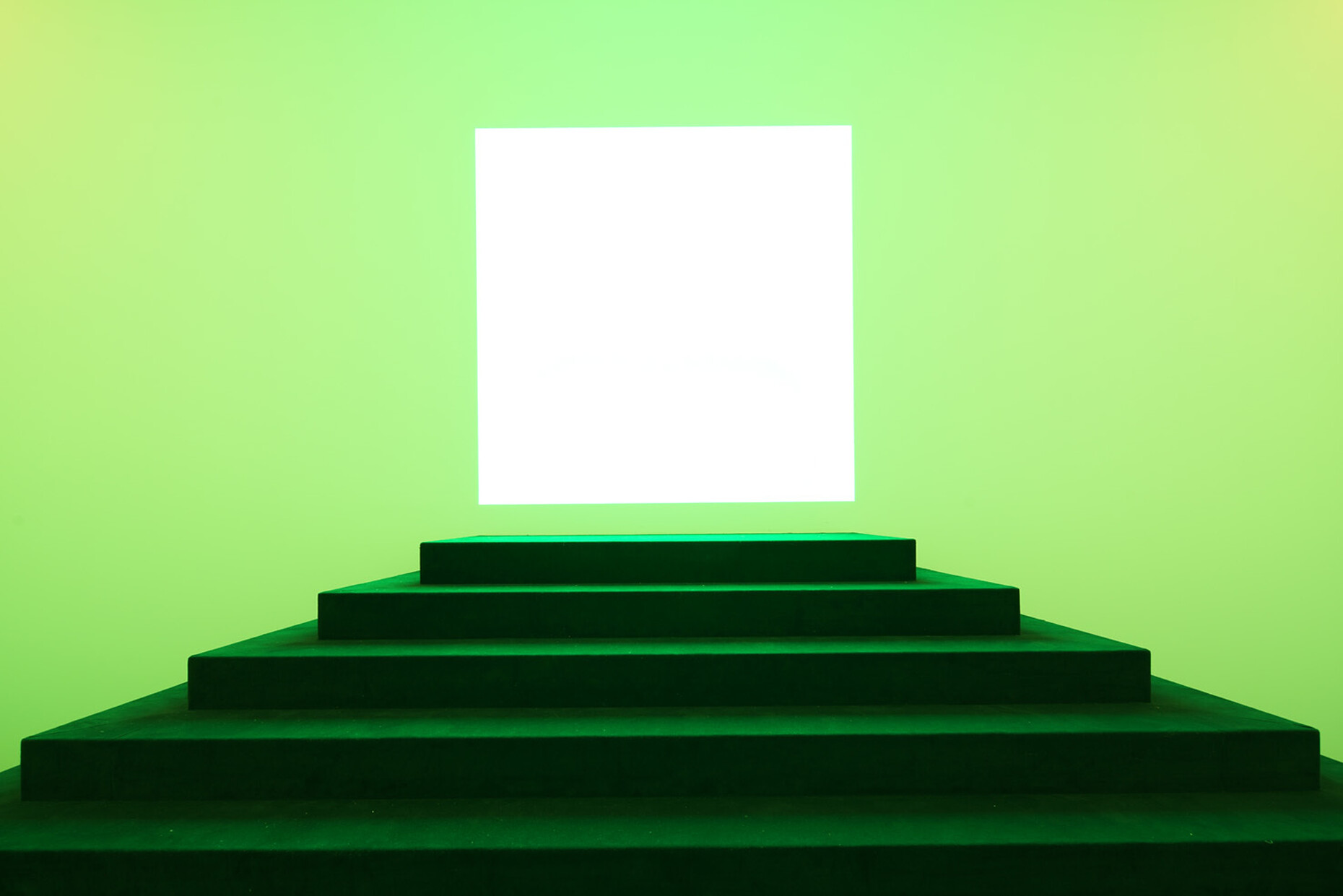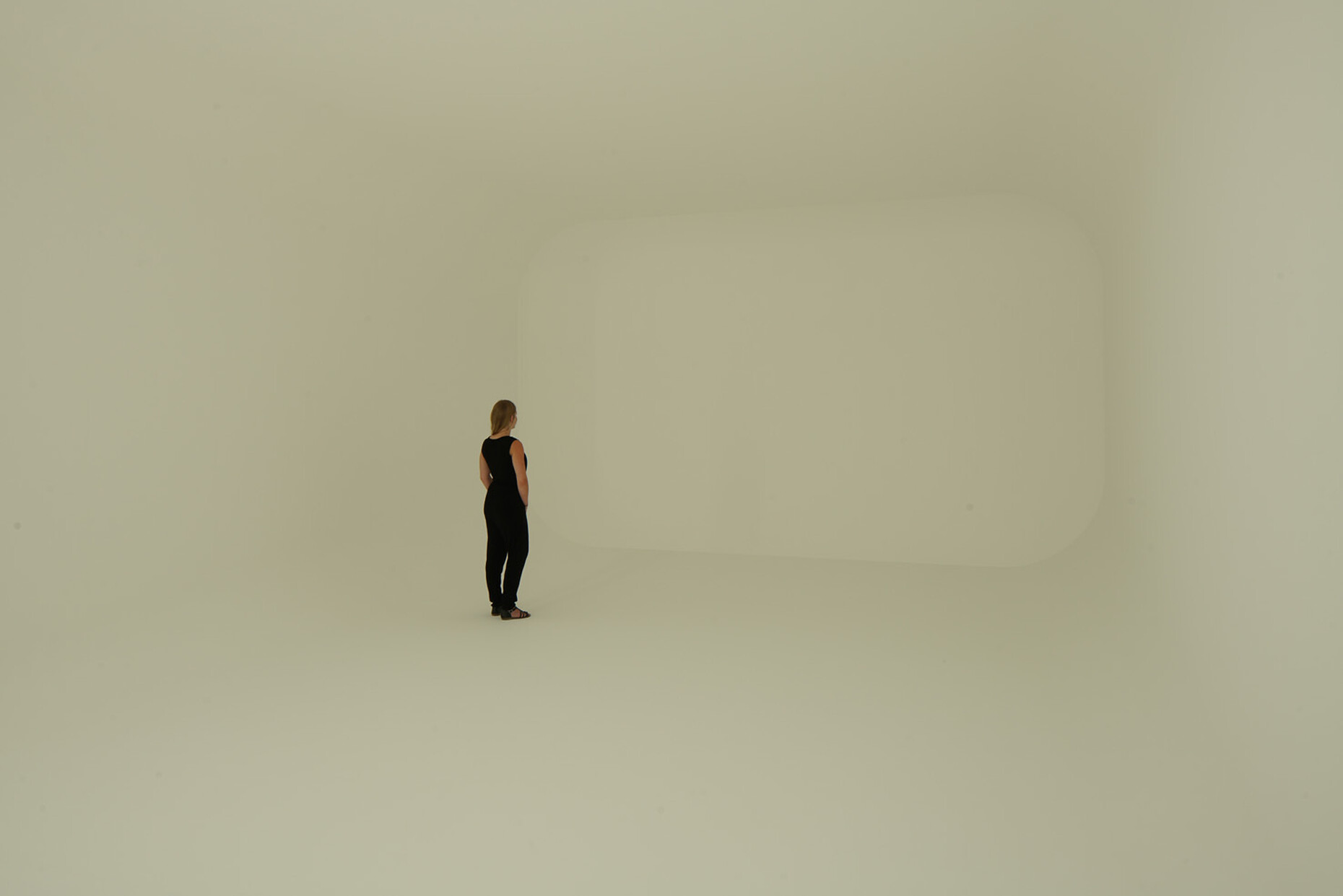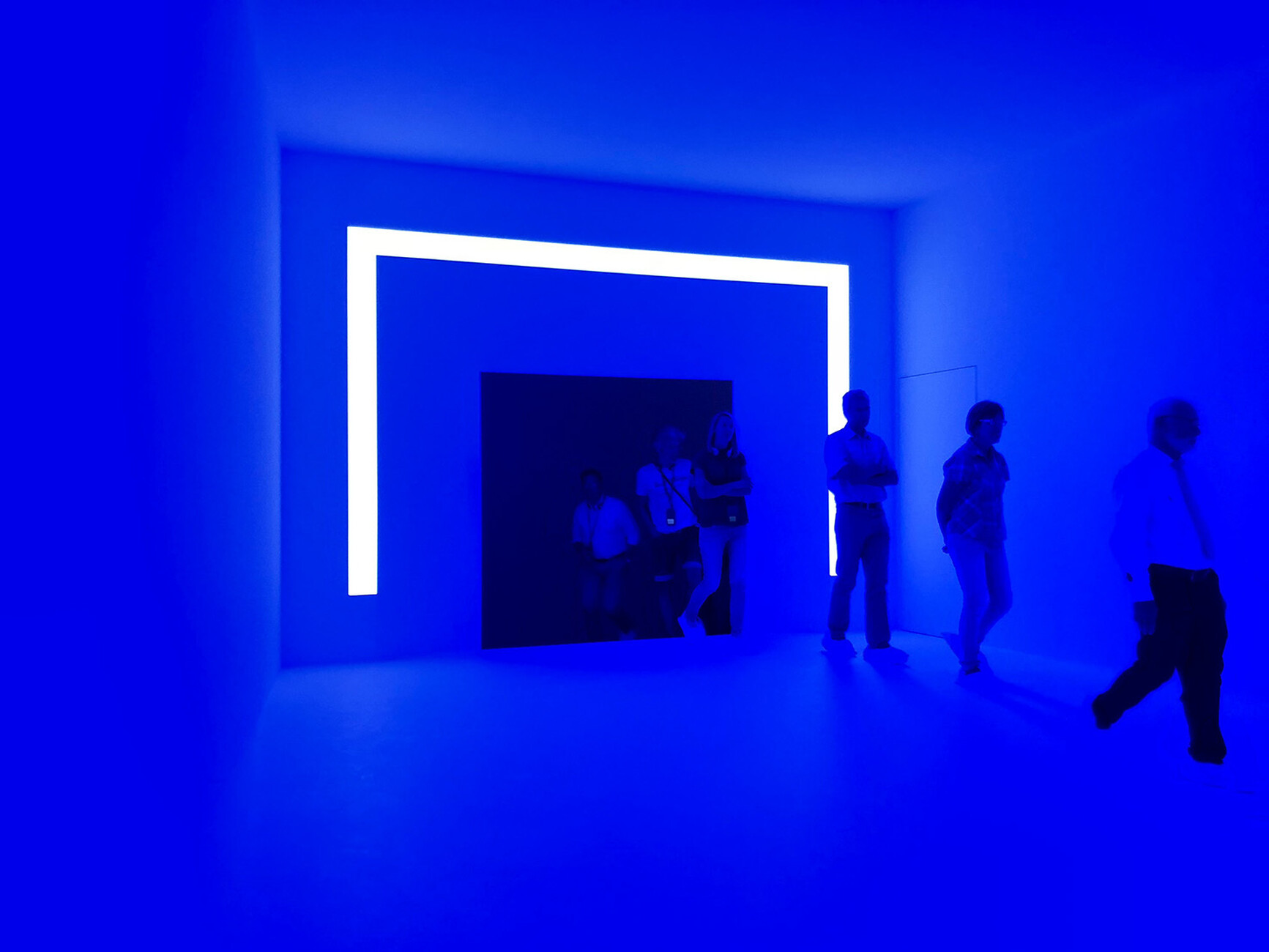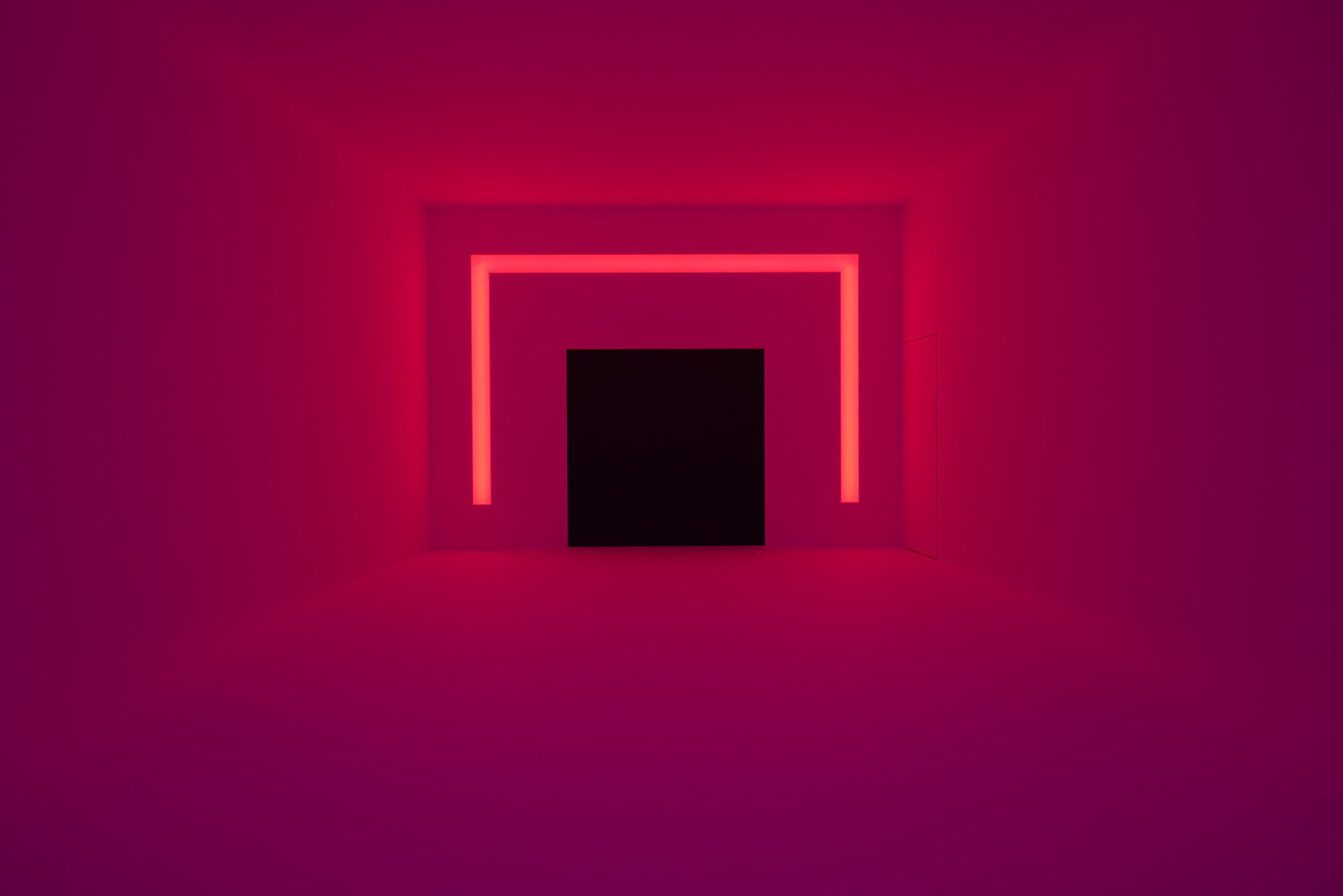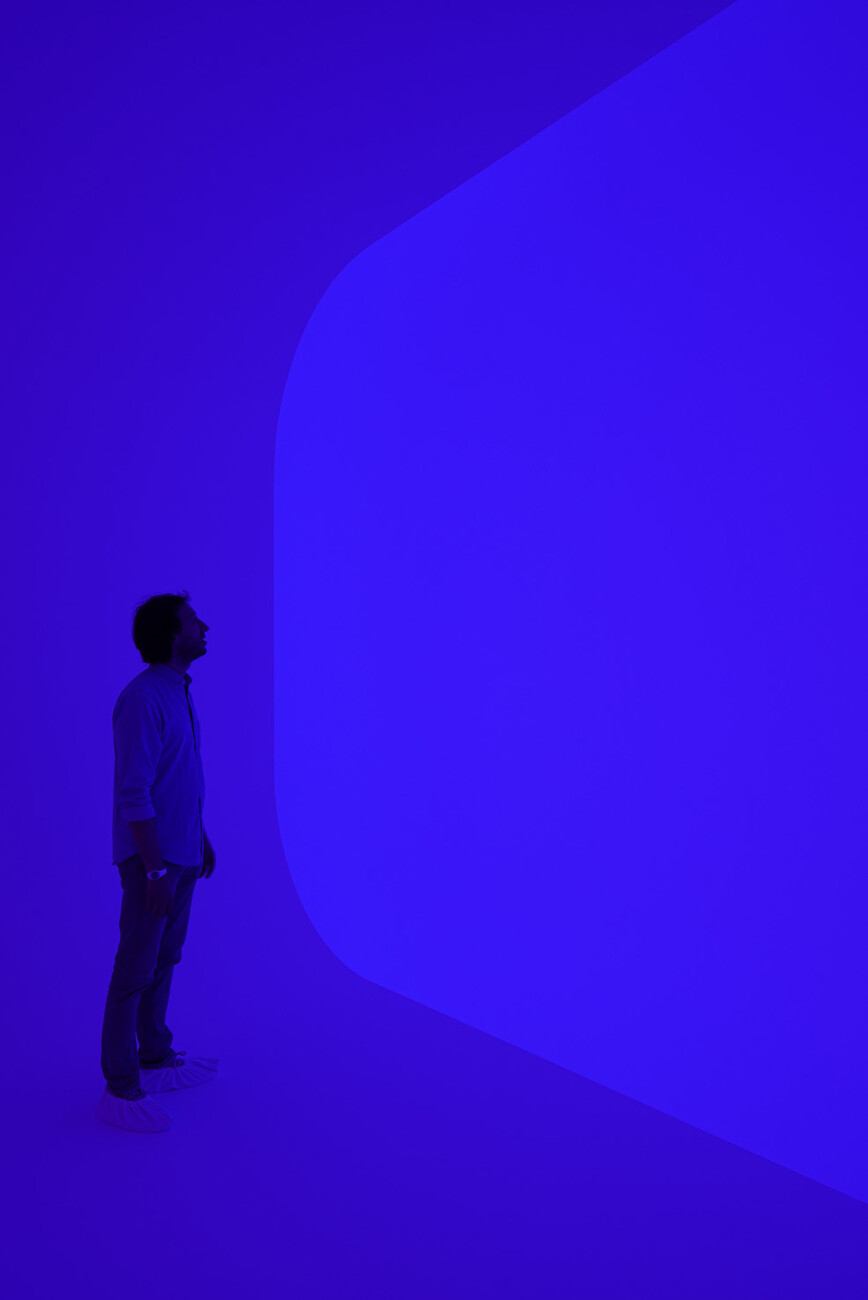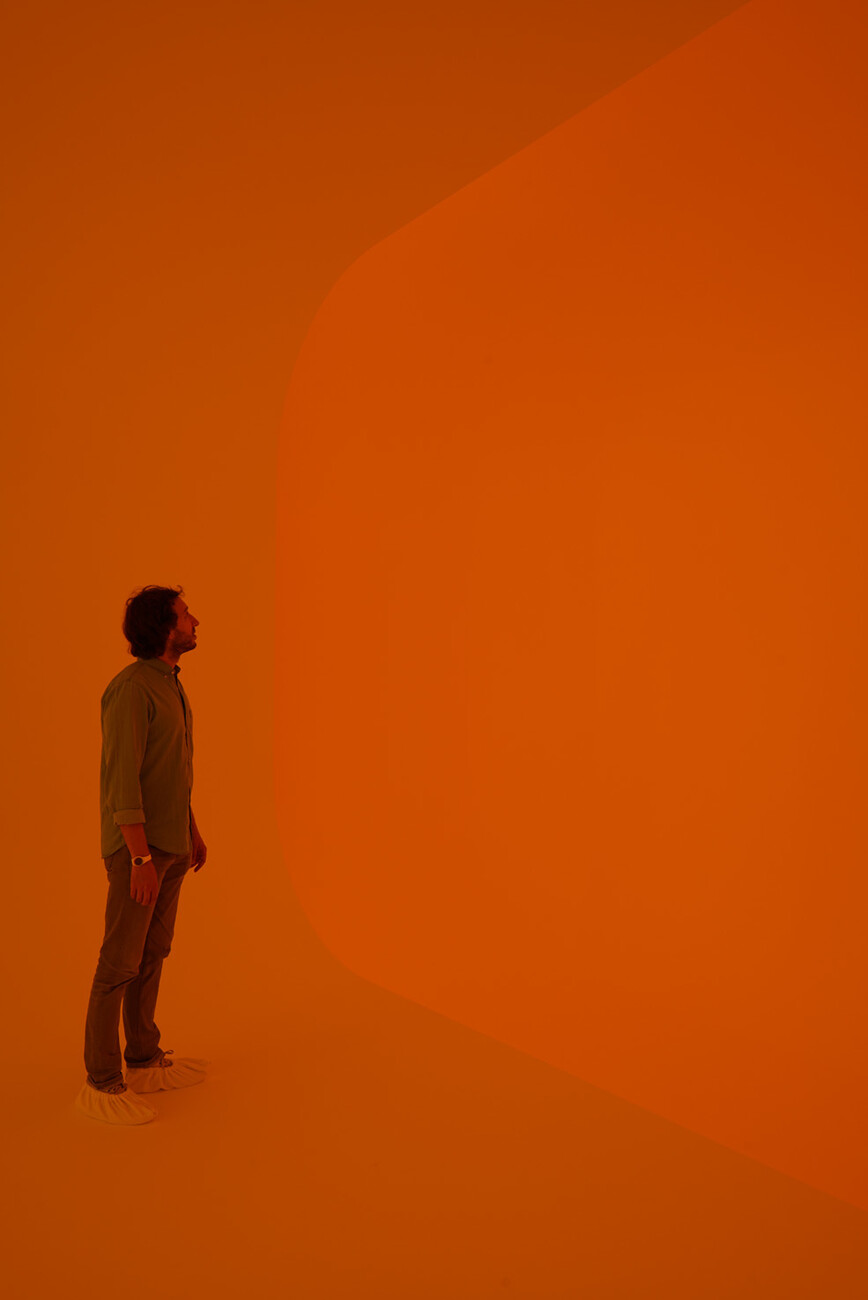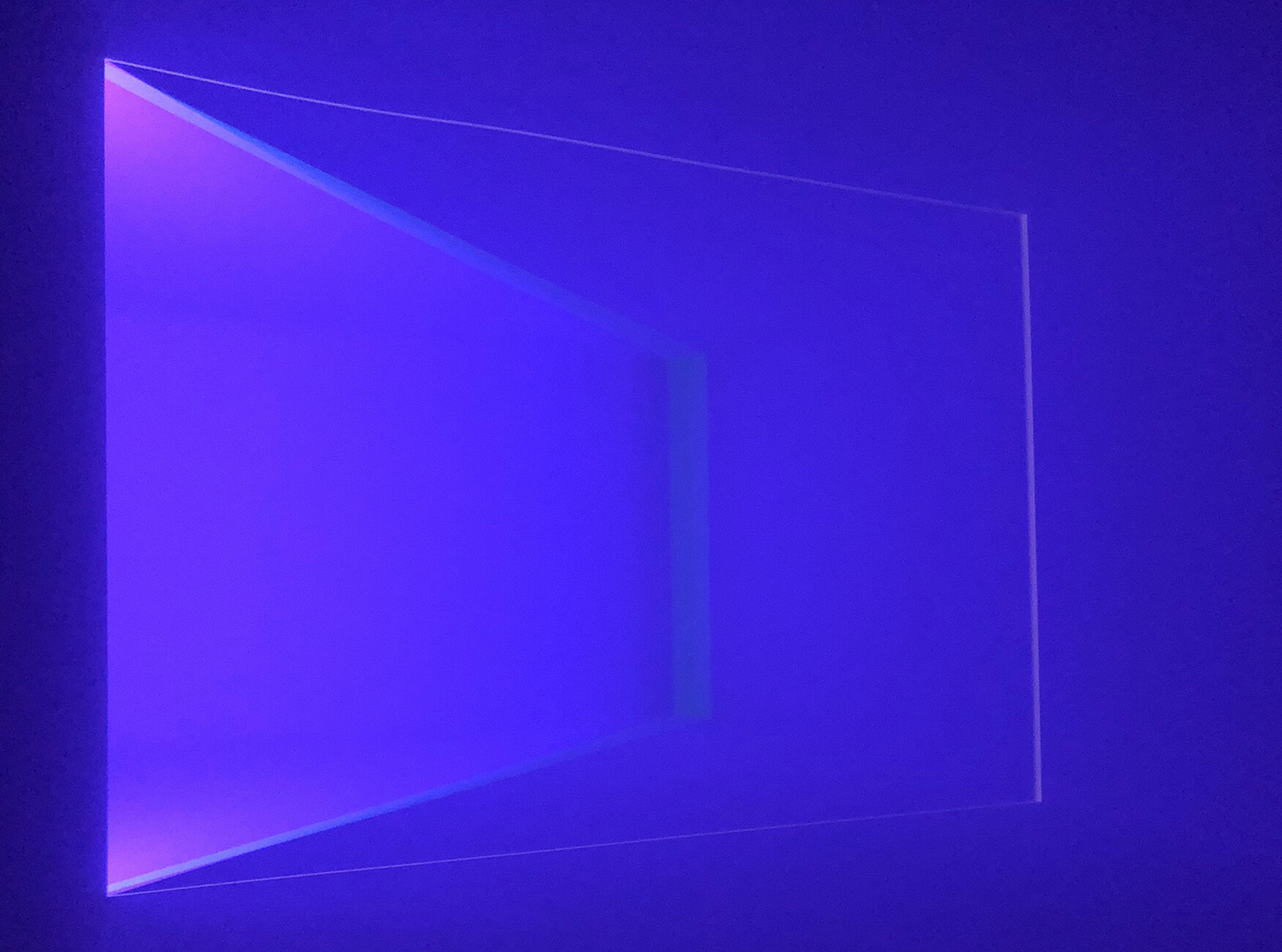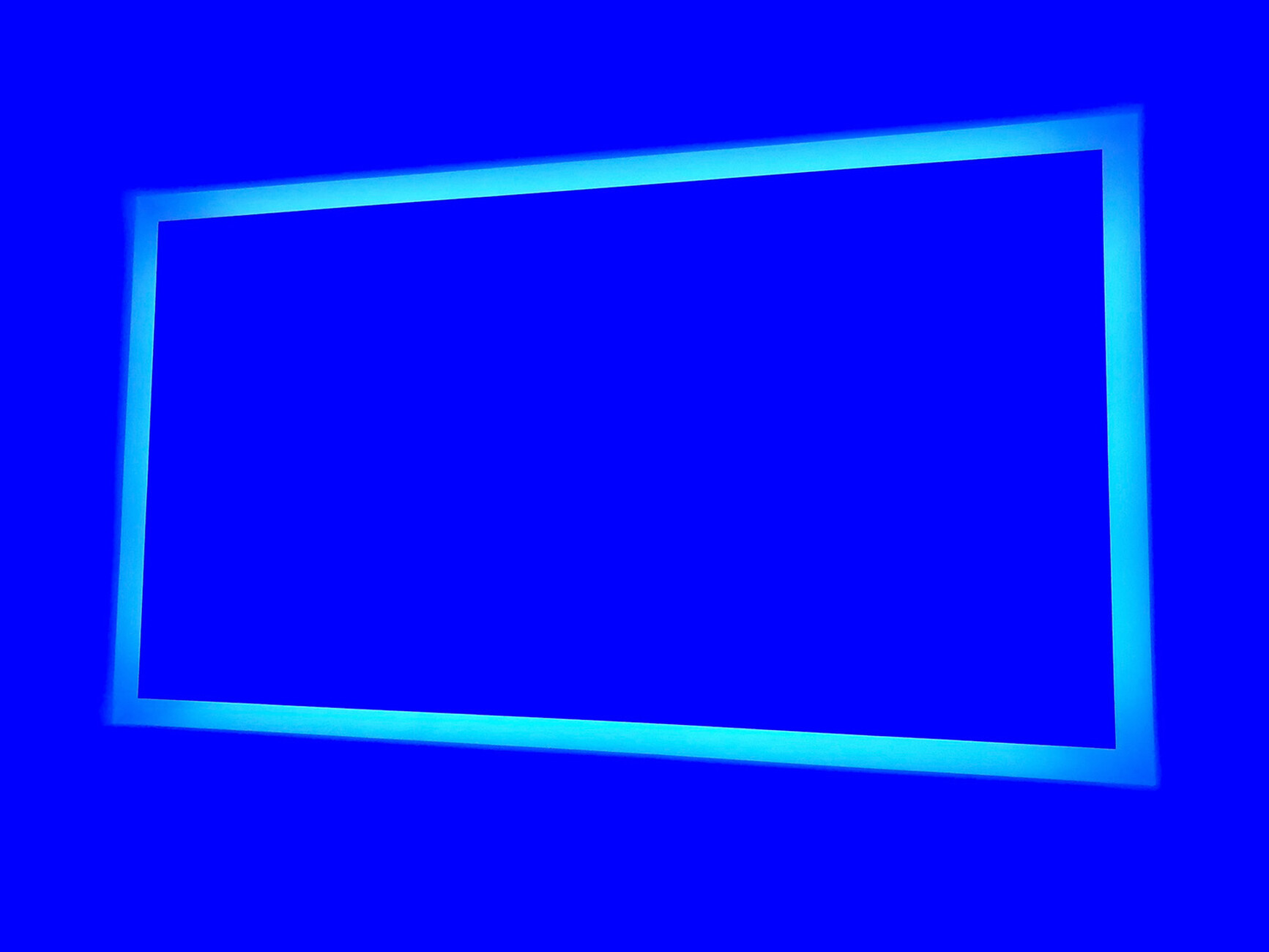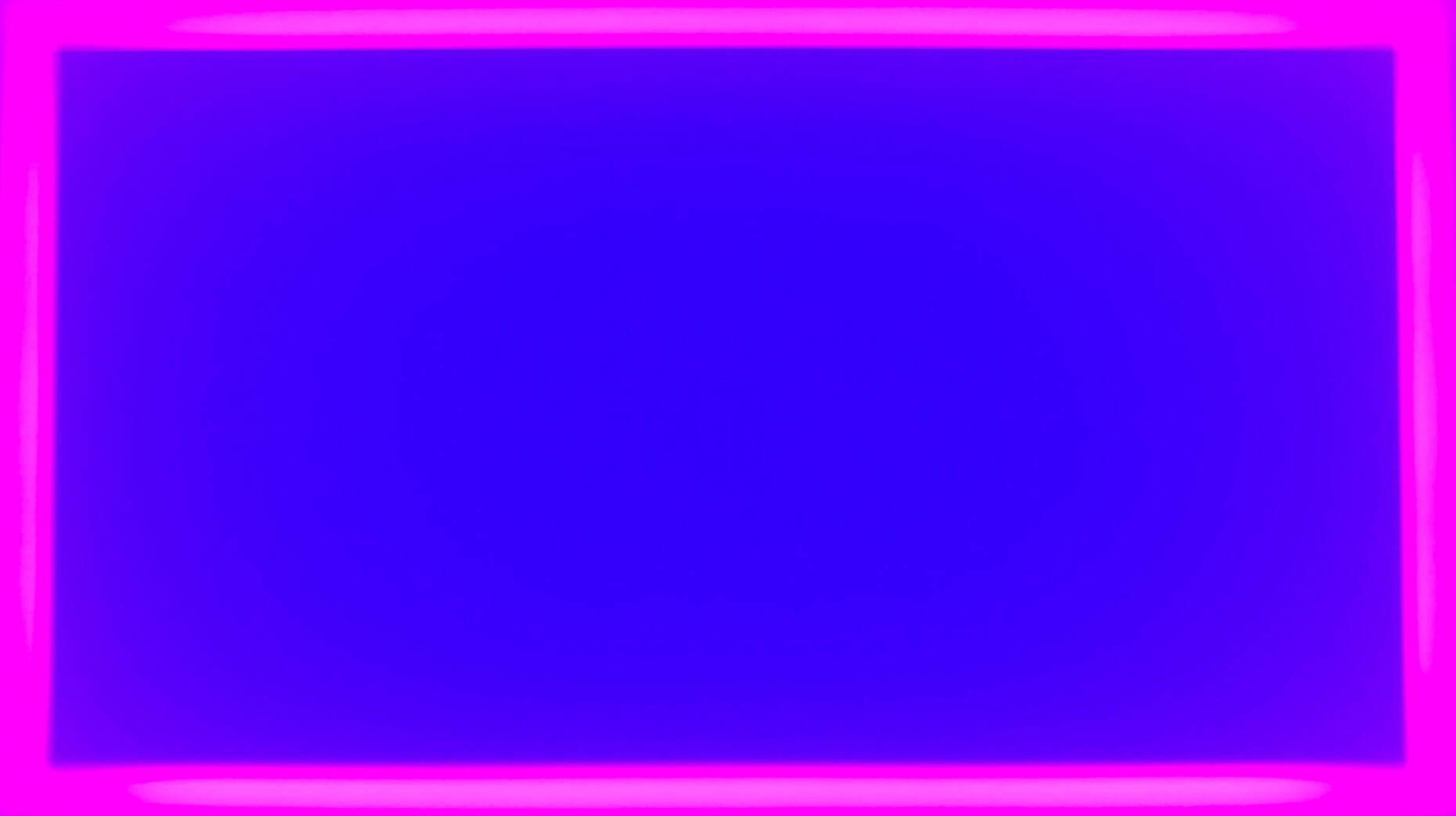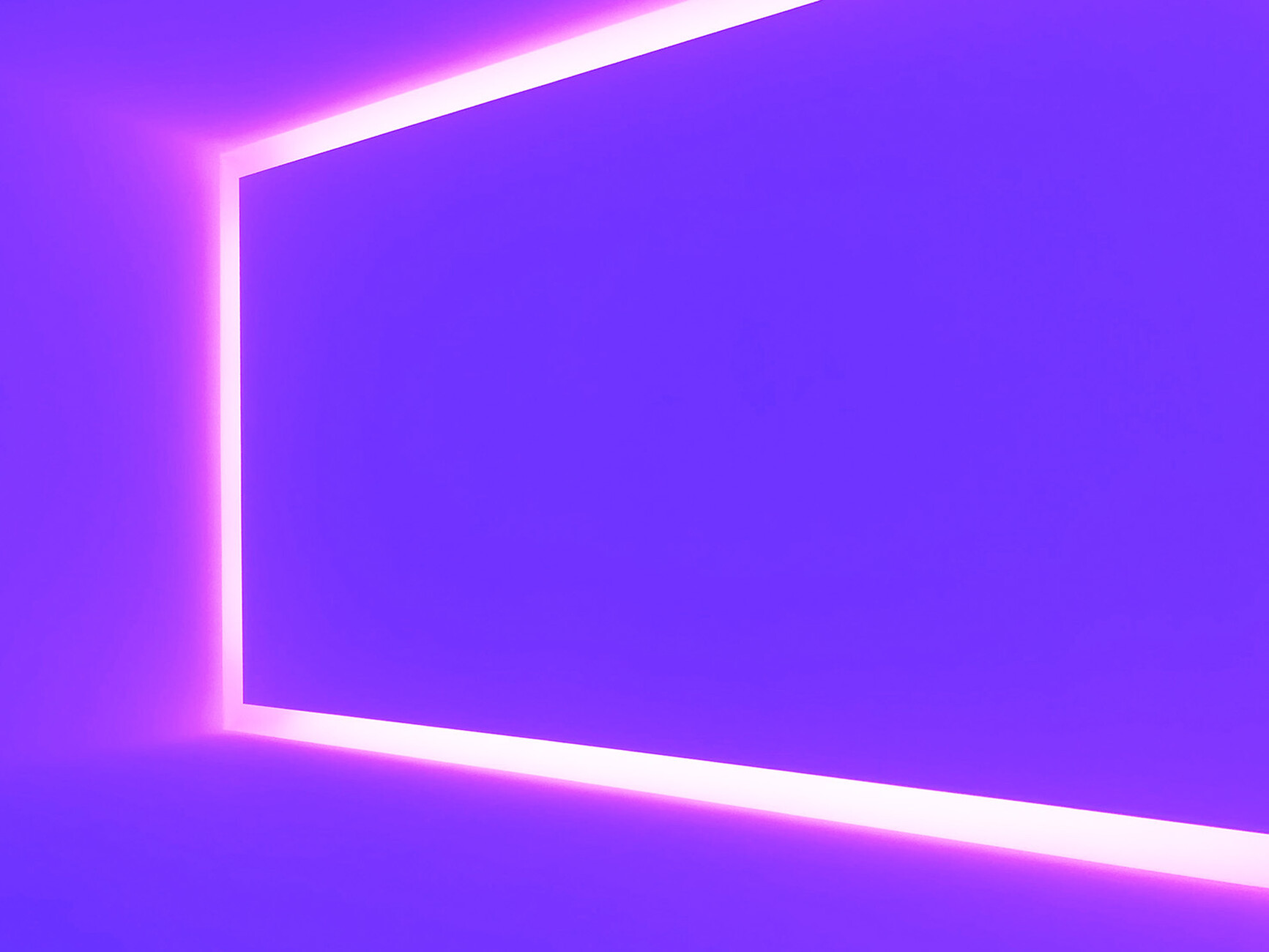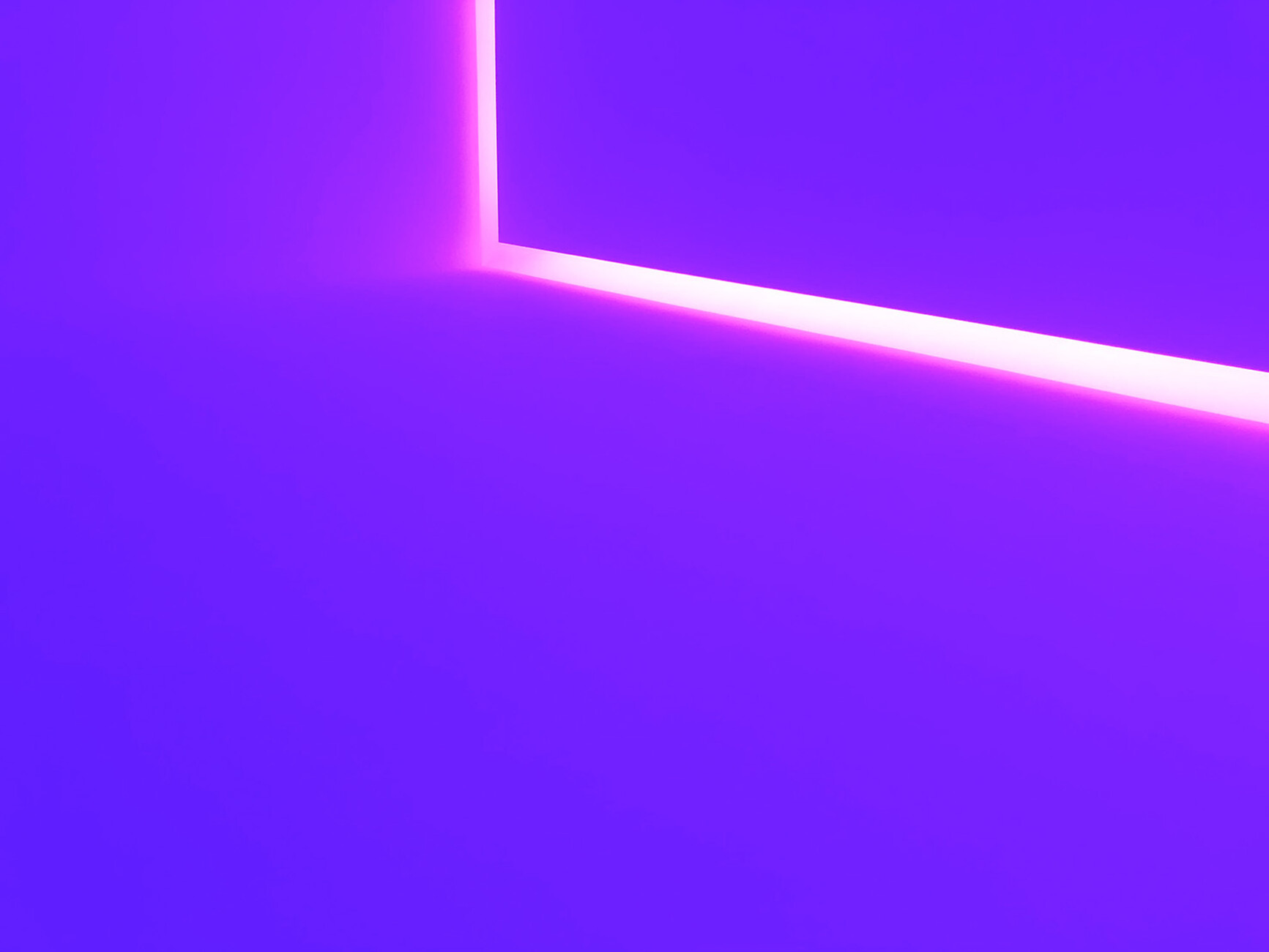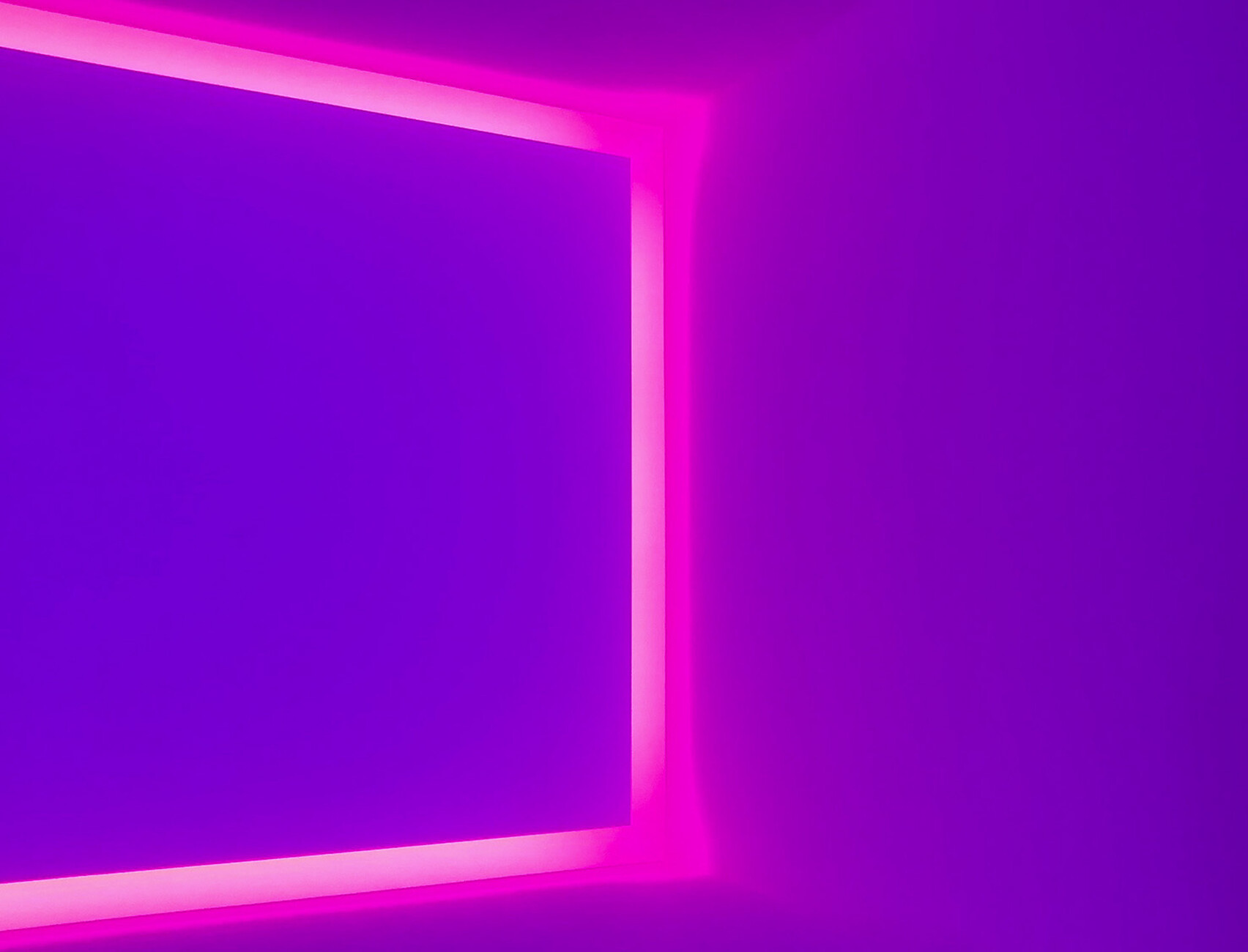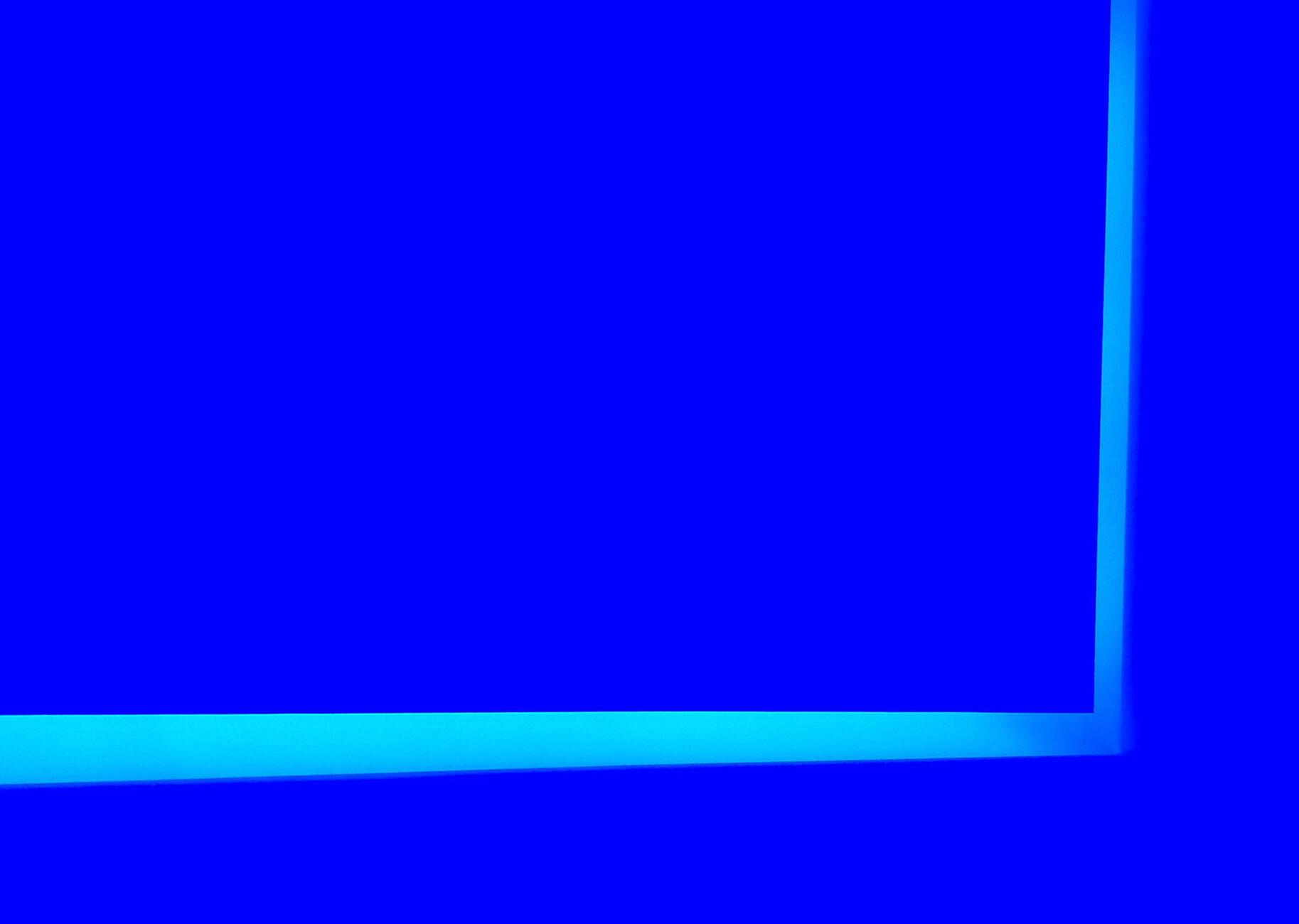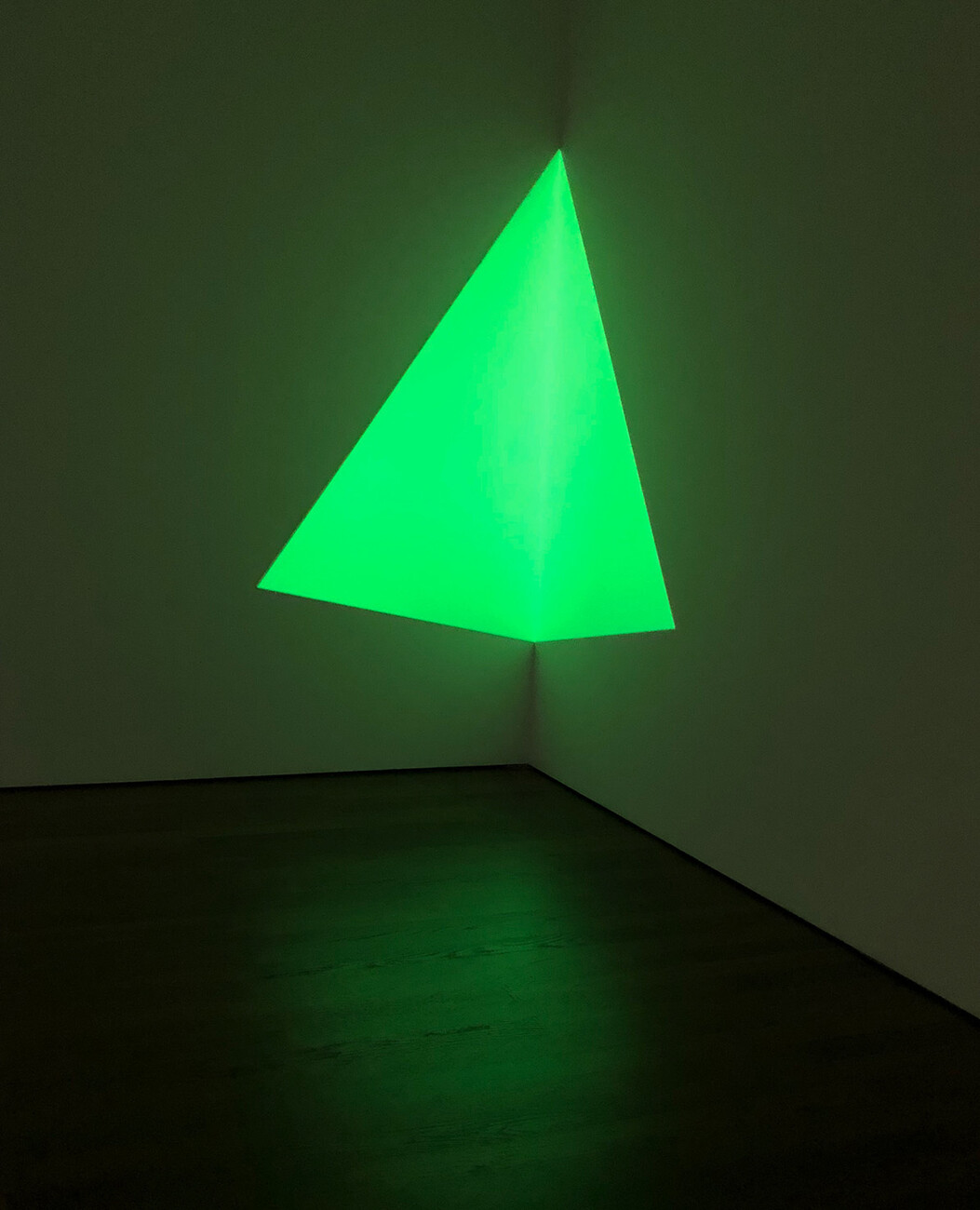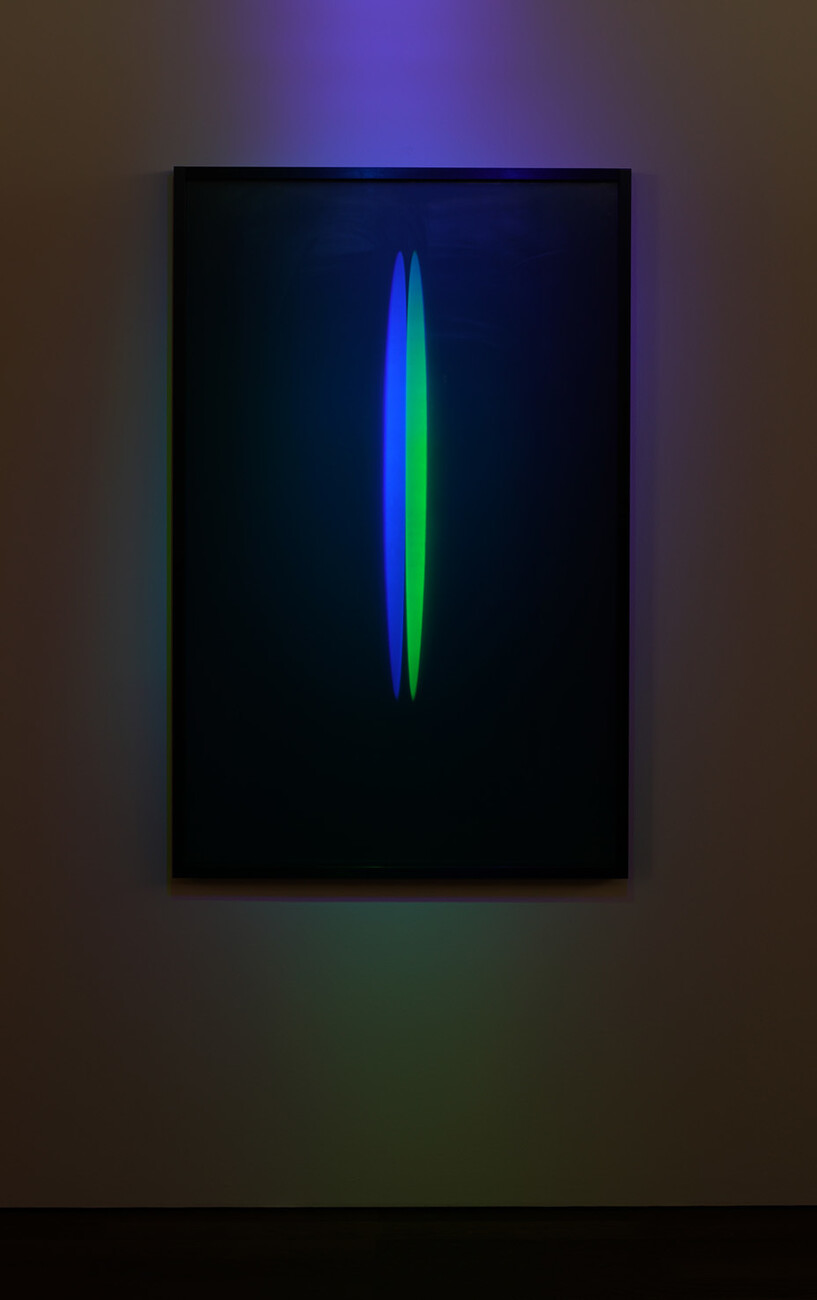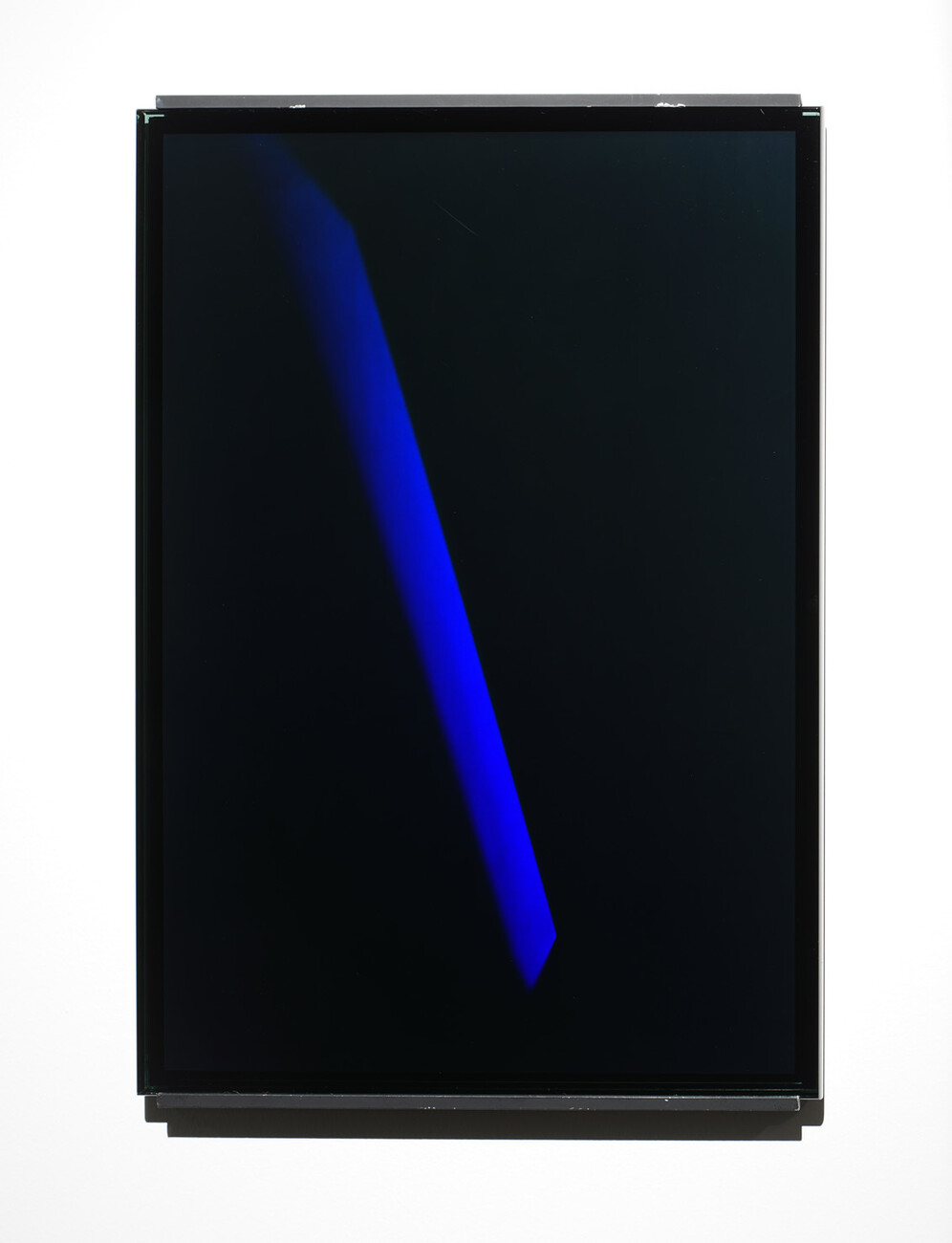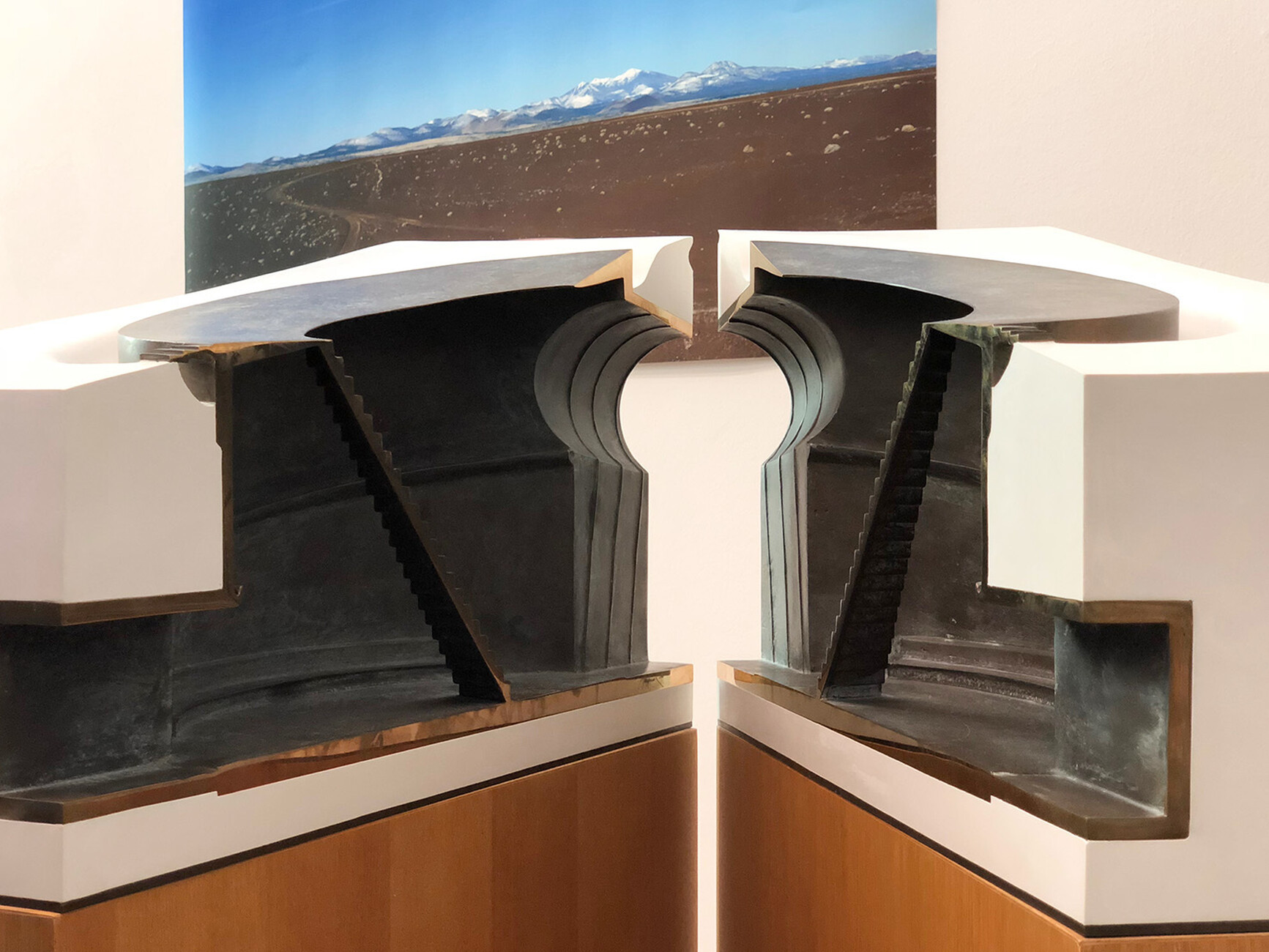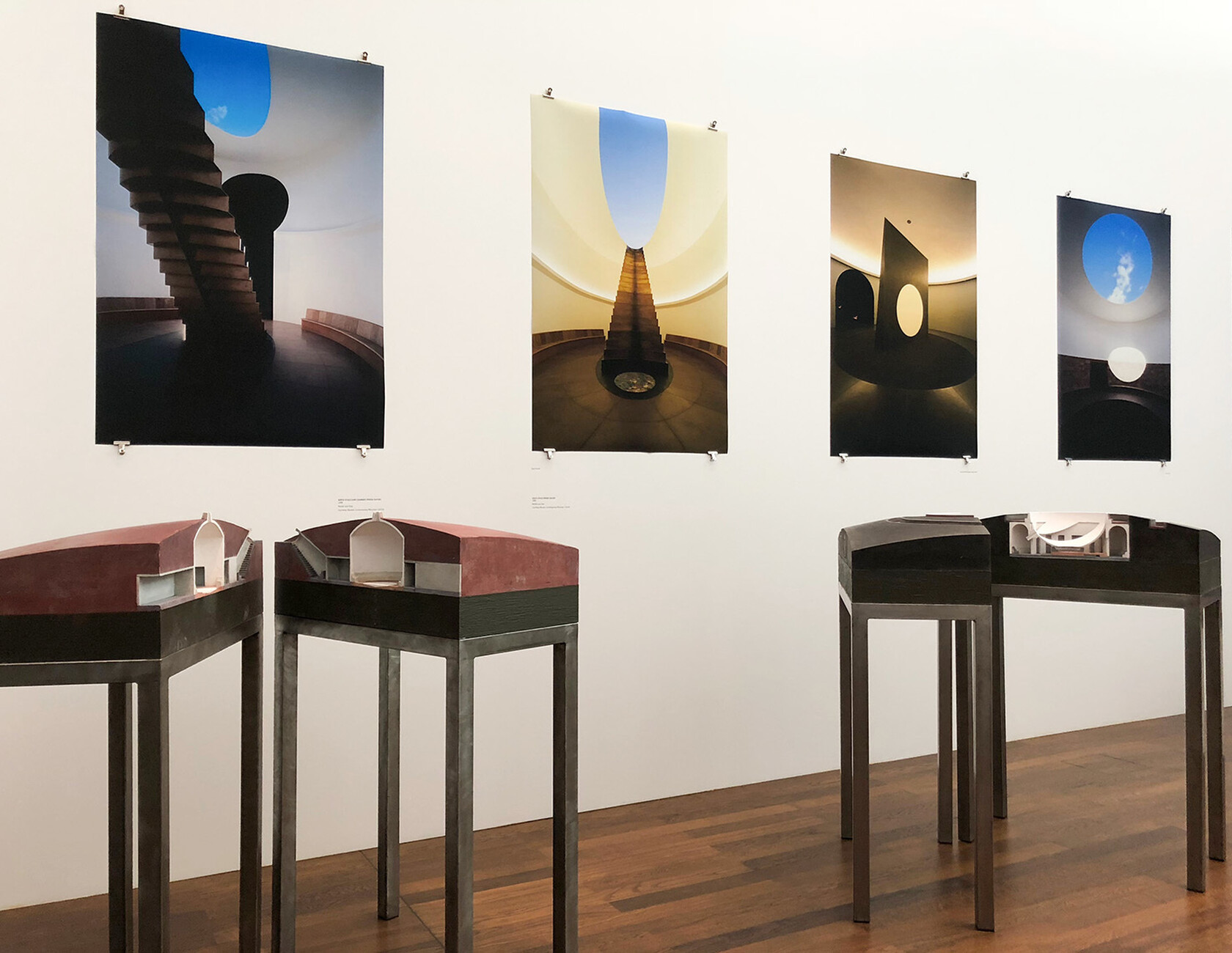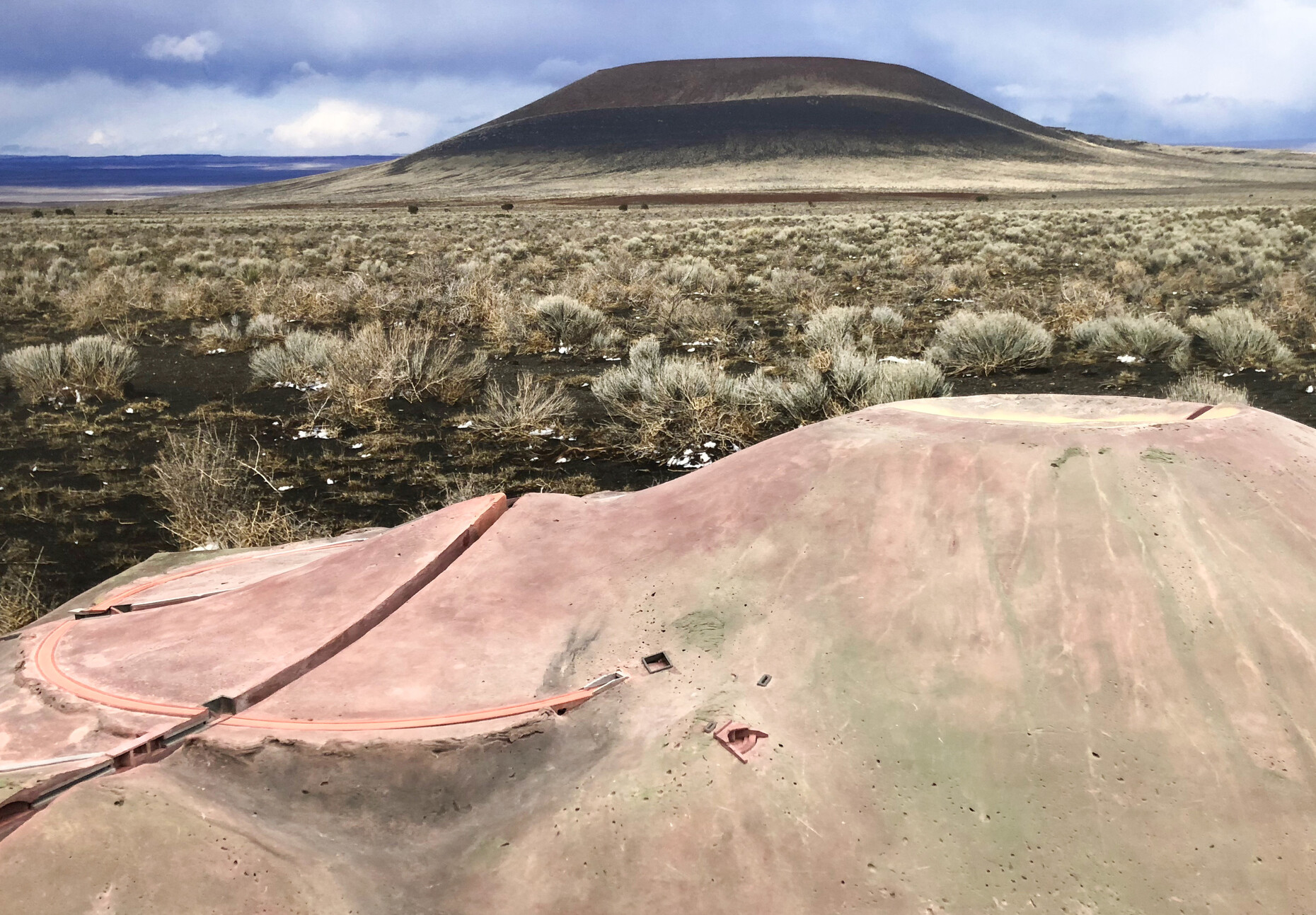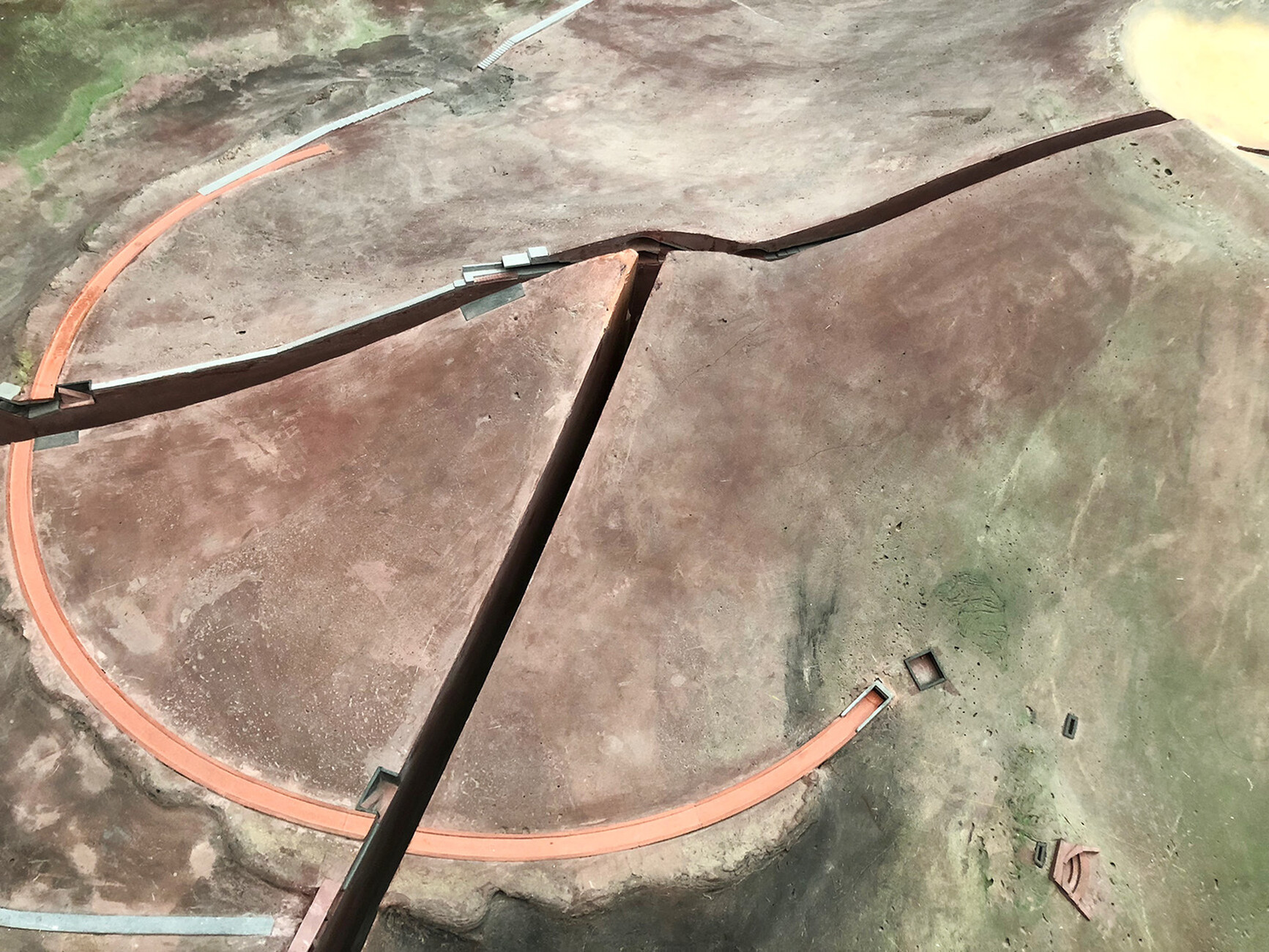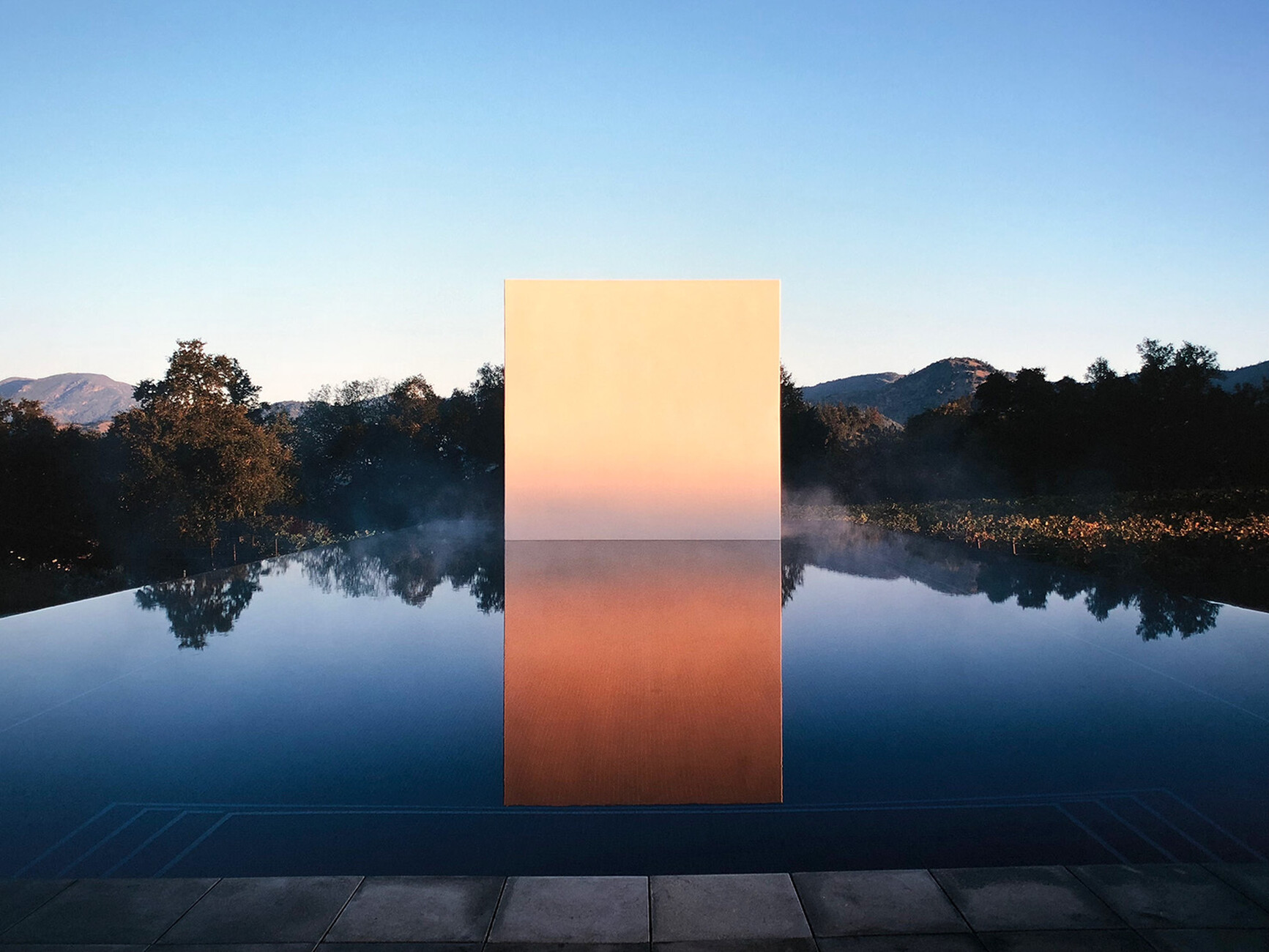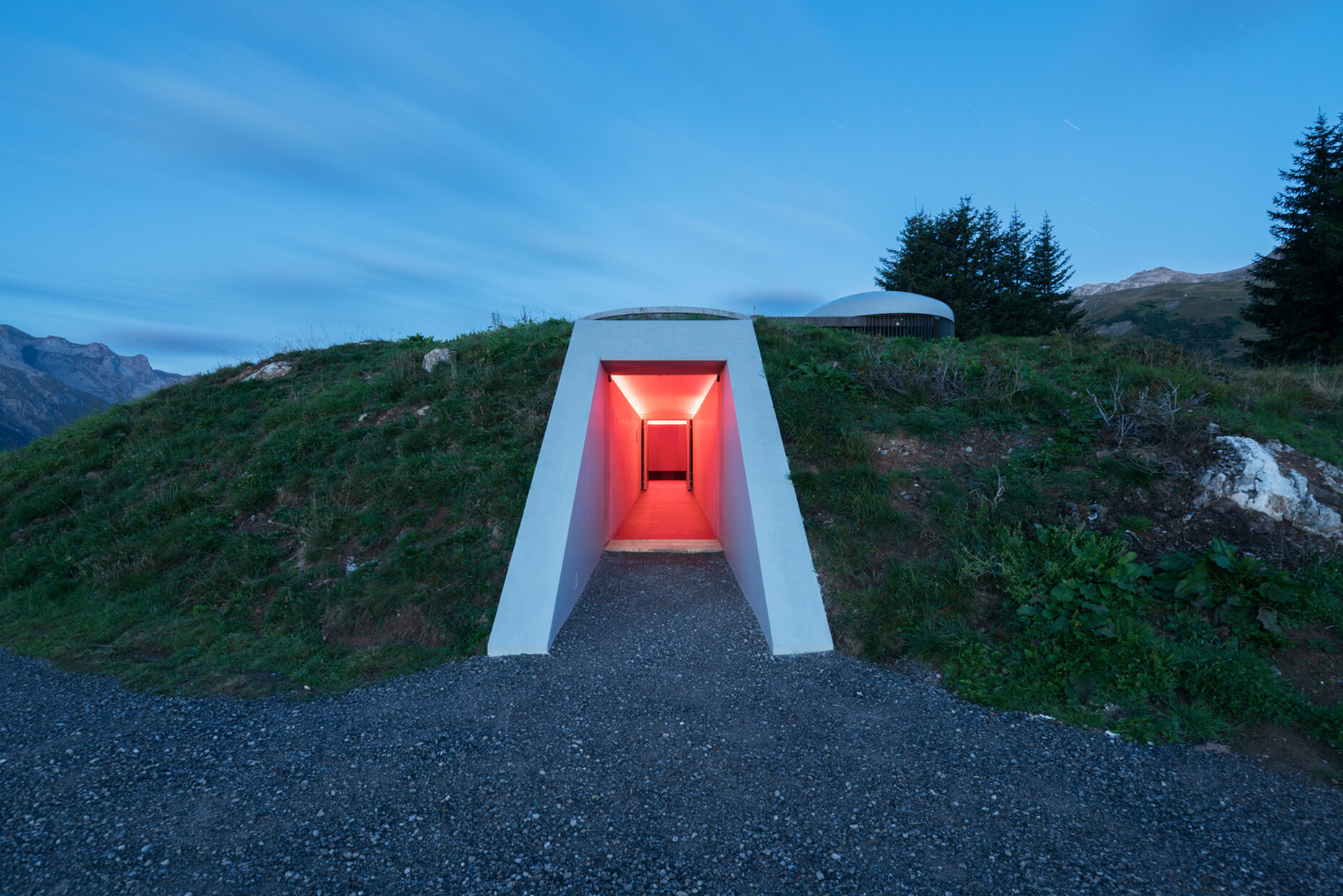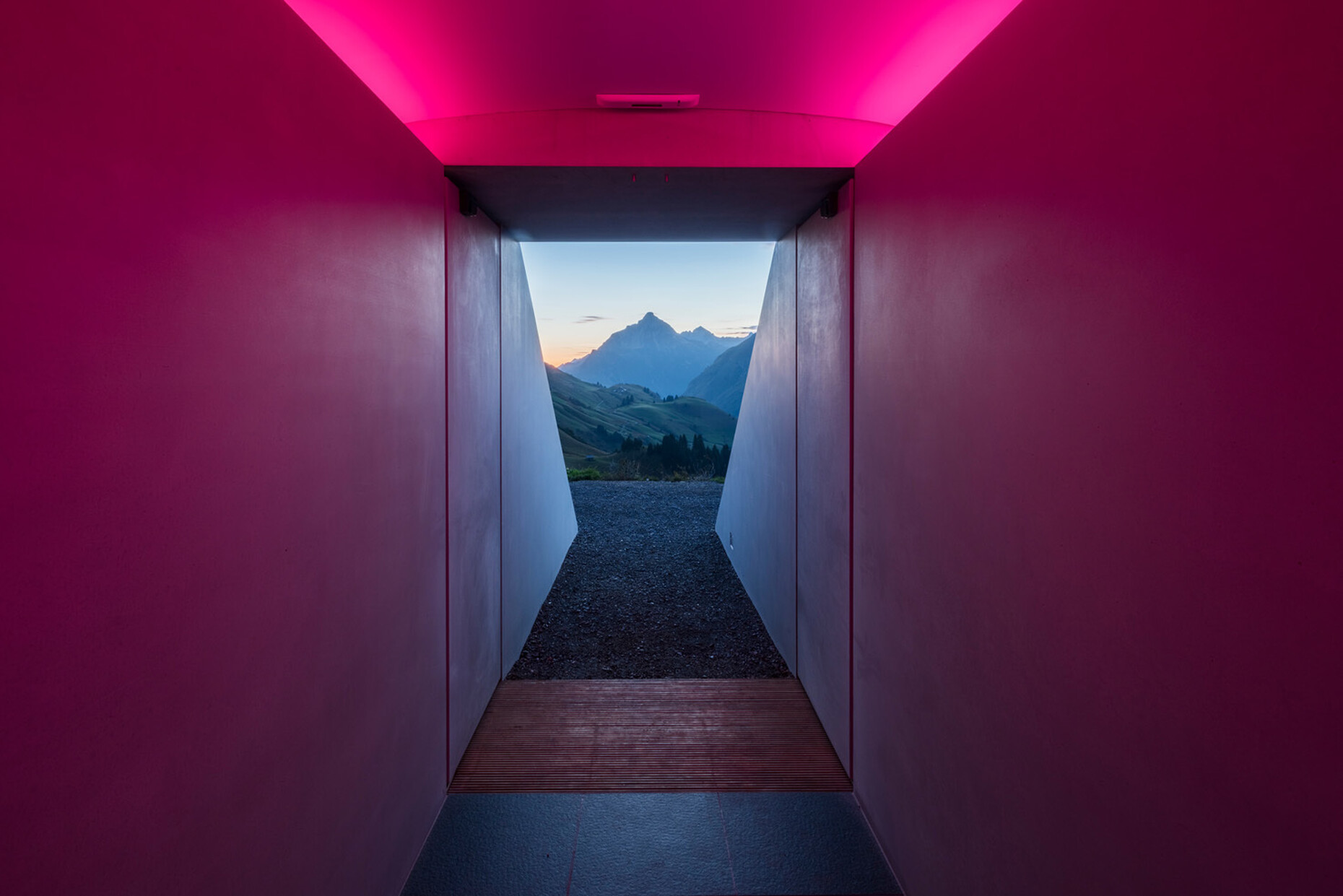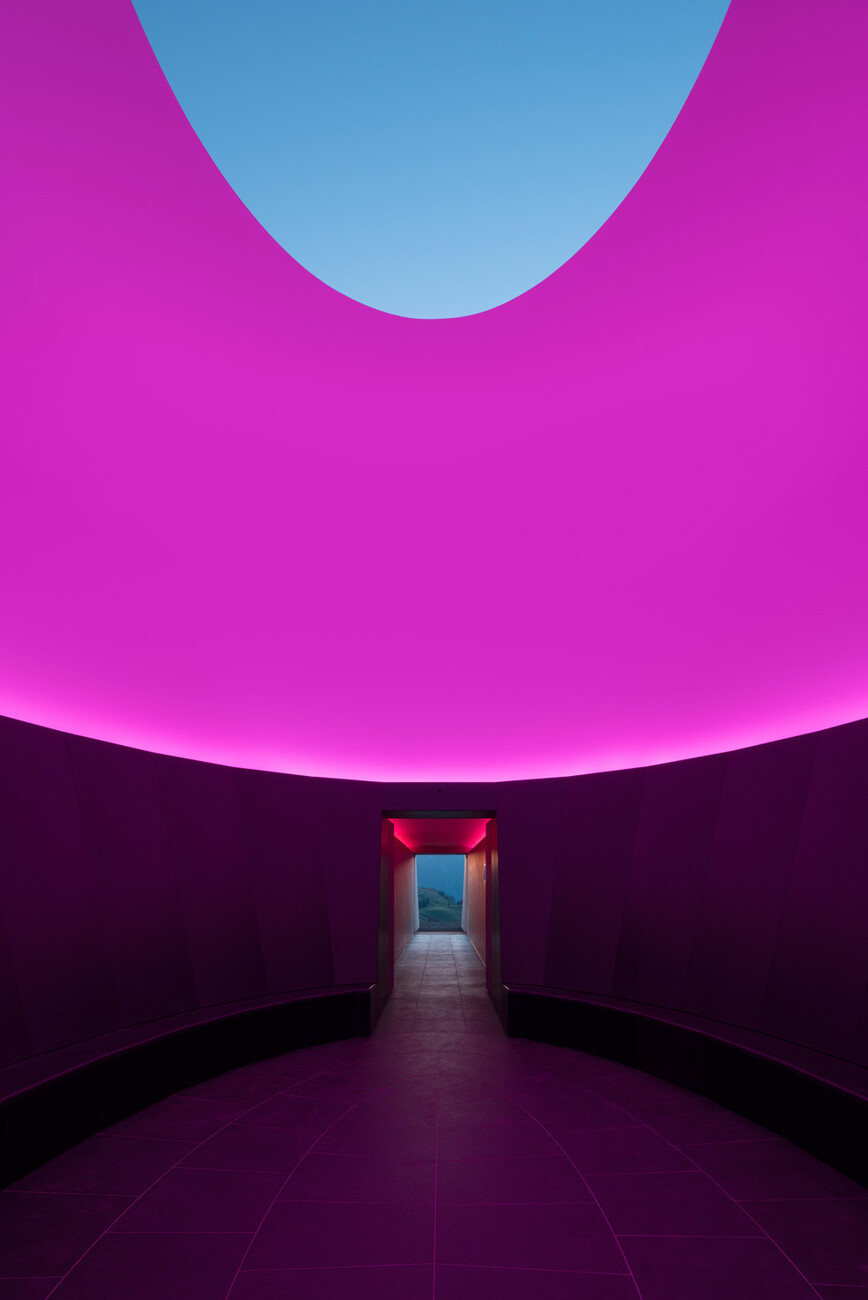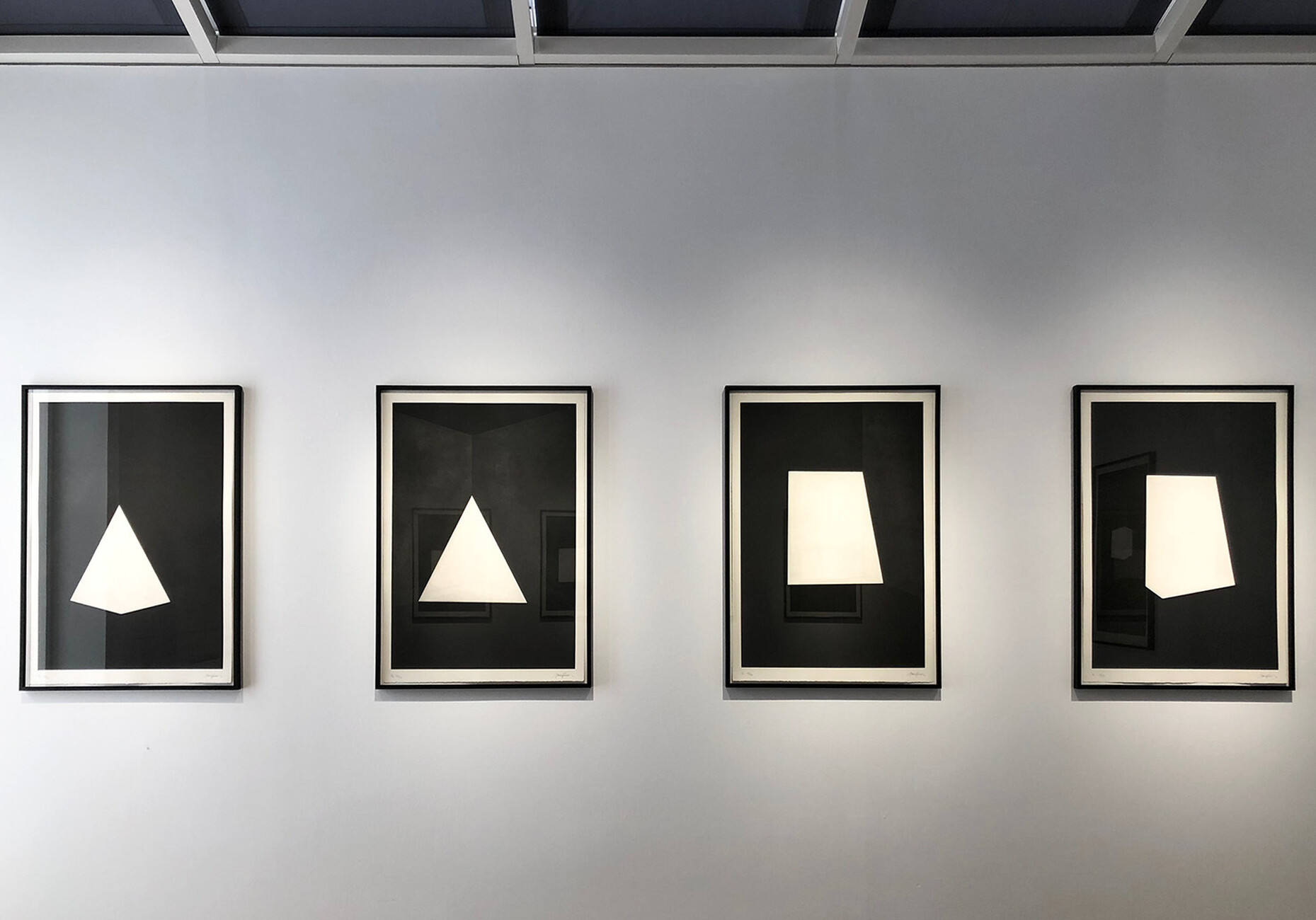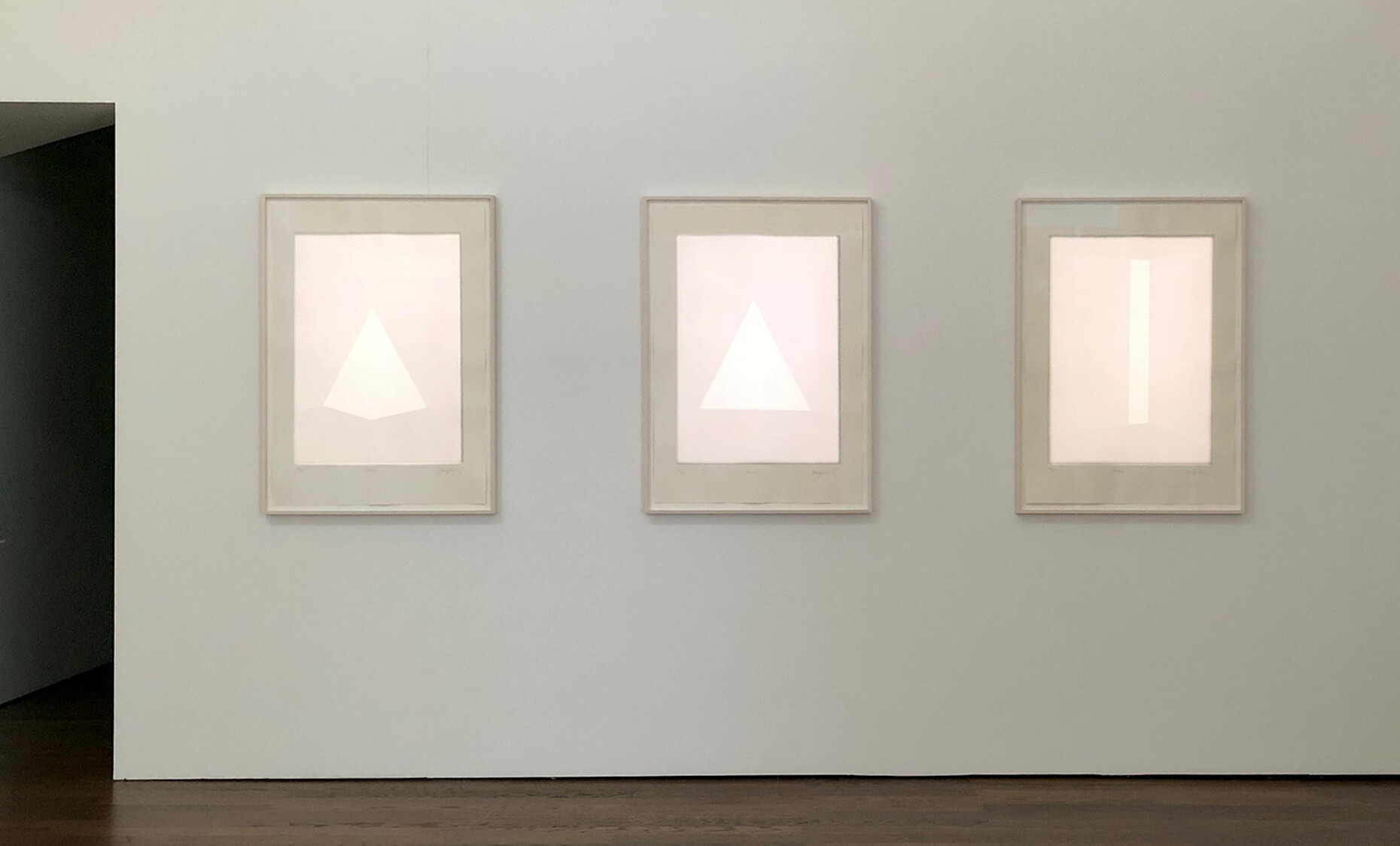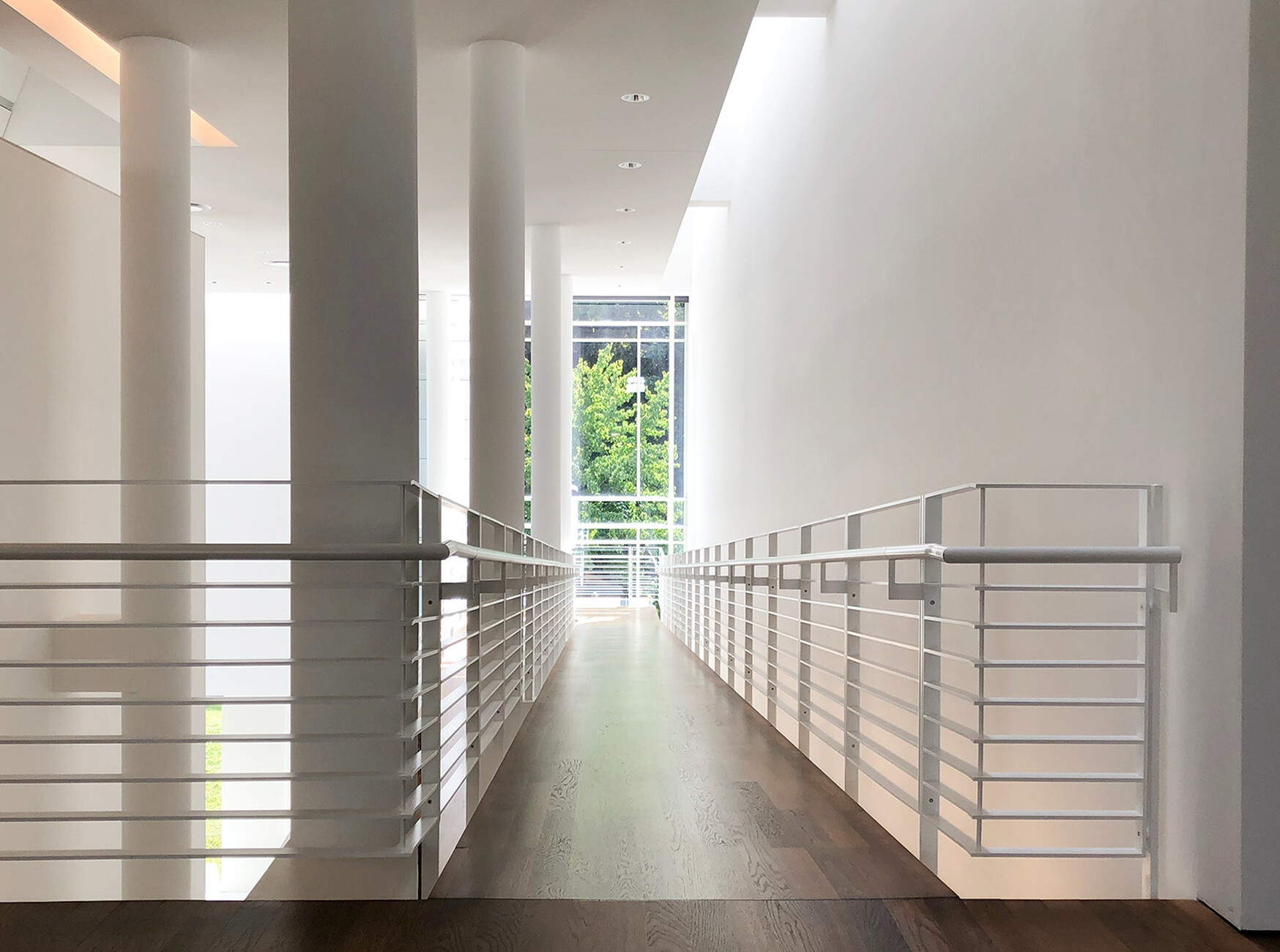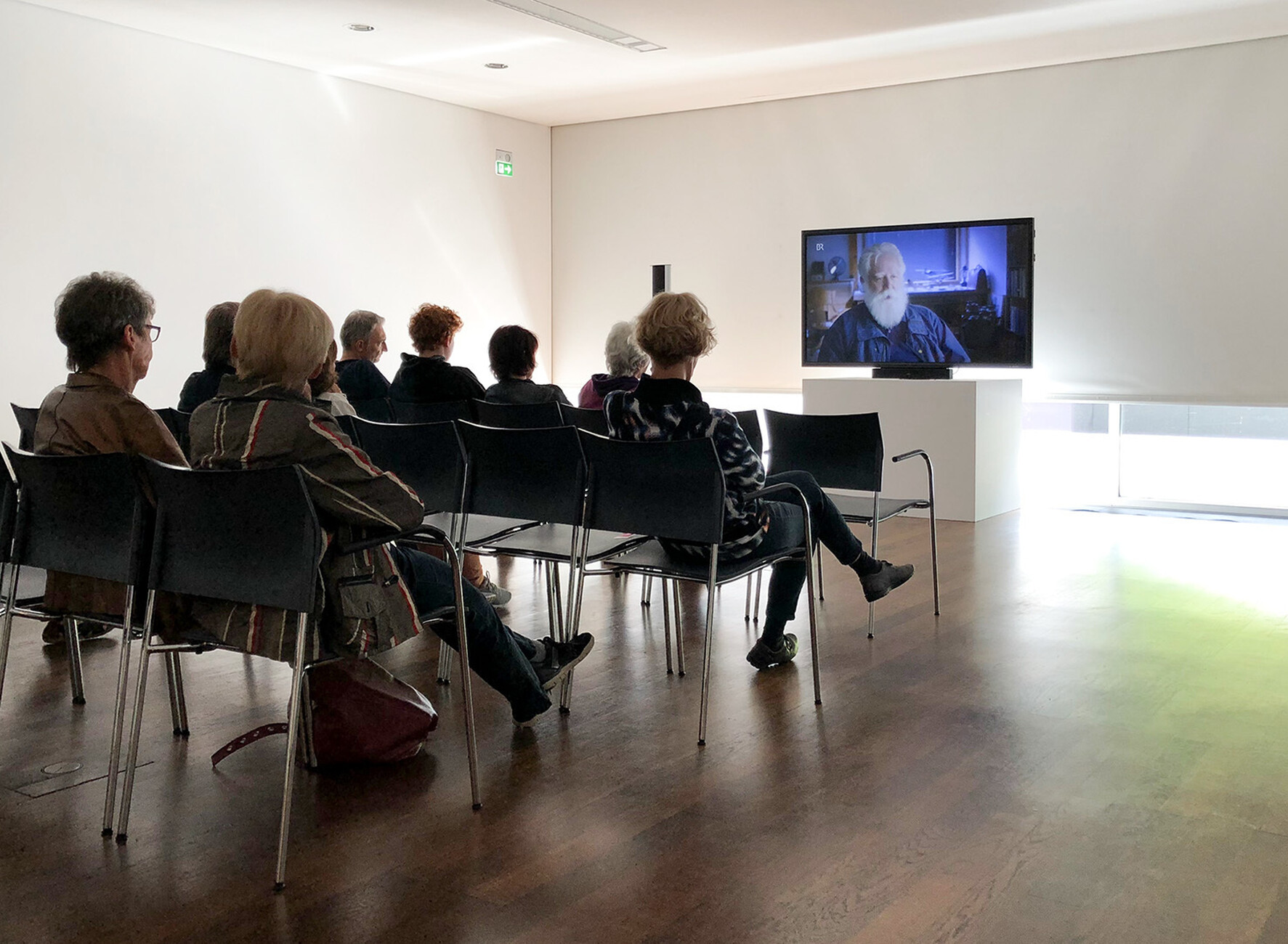Architect of light
A blacked-out corridor on the ground floor of Museum Frieder Burda in Baden-Baden: The babel of voices from the busy adjoining foyer carries over; a black carpet dampens the sound of footsteps. The only orientation comes from a soft glimmer of light from the room at the end of the angled corridor. Within it, there is nothing but a bench and a staircase. From a window-shaped opening at the top of the stairs, the light spectrum radiates in flowing transitions: red, orange, yellow, green, blue and violet. The colorful square in the wall appears like a flat surface, but is actually the entrance to the installation “Apani” by James Turrell. With shoe covers on their feet, visitors climb the stairs to enter a purely white space. Silence reigns. Even before the colorful light presentation begins again, the elongated white cube challenges one’s perception. The eye can’t help but search for a point of reference, for contrast, for orientation in its rounded corners. It’s hard to guess where the walls reach the ceiling and the floor. As soon as the colored light gradually takes over the contour-less room, the dimensions become permanently blurred. A vague color sequence with no visible origin fills it evenly, making it appear unreal and enveloping visitors’ bodies. The presence of the light can literally be felt on the skin, so visitors become part of Turrell’s work at the same time.
A dream landscape
James Turrell’s medium is the observer’s perception, and it is only through this that his works become complete. He creates artworks with no objects, no images. Instead, in his illusionist light spaces, these complete fields of perception, it is color that becomes a perceptible material. A connection develops between the material and the immaterial. As the color is reflected onto the observers themselves, they stare without a focus at the monotonous changes of color until the mind is quietened and opens up to the energy, the emotion, the self-reflection of one’s own perception. “Apani” is part of the exhibition “James Turrell – The Substance of Light,” on show at Museum Frieder Burda in Baden-Baden until October 28, 2018. In it, Turrell enables us to dream with our eyes open. The spectrum of colors he shows us is based on the light phenomena of the sky. Even as a child, Turrell was able to perceive this on board the light aircraft that belonged to his father, a flight engineer. Now he considers the aircraft to be his studio. He finds inspiration in the clouds, these entire fields at great heights. It was from the window of his flying workshop that, after months of searching, Turrell discovered the Roden Crater in the 1970s, an extinct volcanic cinder cone around 400,000 years old in the middle of the Arizona desert. It became the starting point for a lifelong project. Turrell bought the volcano and began converting it into an observatory. It is to eventually encompass six tunnels and 21 rooms, each revealing different sections of the sky and offering the chance to experience their phenomena in elementary fashion. Funded primarily through donations, the construction work is being carried out little by little, but that which has already been completed is impressive – such as the Alpha Tunnel, which delves more than 260 meters through the cone and ends in a kind of altar room, in which there is an opening to the sky. Far from the disruptive light of civilization, visitors to the Roden Crater can see solstices, stellar constellations and the rotation of the Earth.
Between worlds
The architectural precision required to present natural and artificial light so perfectly only becomes clear later on, with the photographs of the project and the construction models in the exhibition. “Light behaves like music – to work with it you need to build the instrument for it,” Turrell says. Alongside his work on the Roden Crater project, he has also set up numerous “Skyspaces” worldwide – rooms with a square opening in the ceiling, generally illuminated in color. The geometric recess makes the sky appear like a flat surface above the room, embedded into the architecture and thus almost tangible. A concentrated piece of the greater whole, whose atmospheric diversity can be observed as if captured in a frame from the sunrise to the darkness of night. It’s no coincidence that Turrell’s constructions are reminiscent of the sort of monuments that indigenous peoples once built for their ceremonies. Born into a devout Quaker family, the American artist was strongly influenced in his work by the experience of hours of stillness in meditation and the belief in a supernatural, spiritual power. His later studies of astronomy, mathematics, perceptual psychology and art aroused his interest in the effect of light on our consciousness and were the starting point for his work with pioneering technologies – back in the 1990s Turrell was already experimenting with LED lights, for example. The multifaceted oeuvre of the 75-year-old artist becomes visible in the exhibition thanks to space-consuming installations, projections, models, holograms and works on paper.
Turrell himself believes he is a landscape painter, an architect of the visual space. When his light art meets existing architecture, the impression it creates changes considerably: Structures become transient and are at times virtually absorbed. In order to create a boundless place for our consciousness using light as a building material, he has to reduce the initial situation to a minimum. This was the case, for example, with the rotunda of Frank Lloyd Wright’s Guggenheim Museum in New York City, which Turrell used for his “Aten Reign” skylight installation in 2013. It’s an effect people don’t always like to see, and Richard Meier, who created the building for the Frieder Burda collection, was said to not be entirely enthusiastic about the idea of the exhibition. At the same time, for visitors, Turrell’s perceptual architecture is ultimately not really in competition with the building in which it is exhibited. Rather, it creates a room within it that opens up to a sensory dreamworld in which visitors can grasp their own perception and its fallibility. The emotions they feel as part of this process may range from something like tripping on drugs to anxiety to euphoria.
In order for observers to experience Turrell’s works as a whole, the atmosphere must be one of concentration, stillness and clarity. Ideally, one should experience the work alone. His art is art for the individual, not for the crowd. It cannot simply be “consumed” in passing. These prerequisites are often hard to implement in a public exhibition, hence the works in the Museum Frieder Burda show are distributed across multiple floors, and as visitors make their way upwards they pass a separate show of works by German artist Gerhard Richter. This routing makes it somewhat difficult for visitors to find all the exhibits by James Turrell straight away or to linger in them without distraction. Those who are not put off by this are rewarded – alongside the groups of works from the last few decades, previously unseen works in the “Hologram Series” are also on display. The “Accretion Disk” light space was designed specifically for the exhibition in collaboration with Zumtobel, Turrell's long-standing partner, and ultimately leads into the museum’s permanent collection upstairs. This makes it possible to enter into an intensive dialog with his work even after the closing event – an experience that a two-dimensional depiction cannot convey. “A photo tends to show everything as more concrete than it really is, yet part of the magic is seeing a work of art in its transience – and also being physically present oneself,” says James Turrell.
James Turrell - The Substance of Light
Until 28. October 2018
Museum Frieder Burda
Stiftung Frieder Burda
Lichtentaler Allee 74
76530 Baden-Baden
